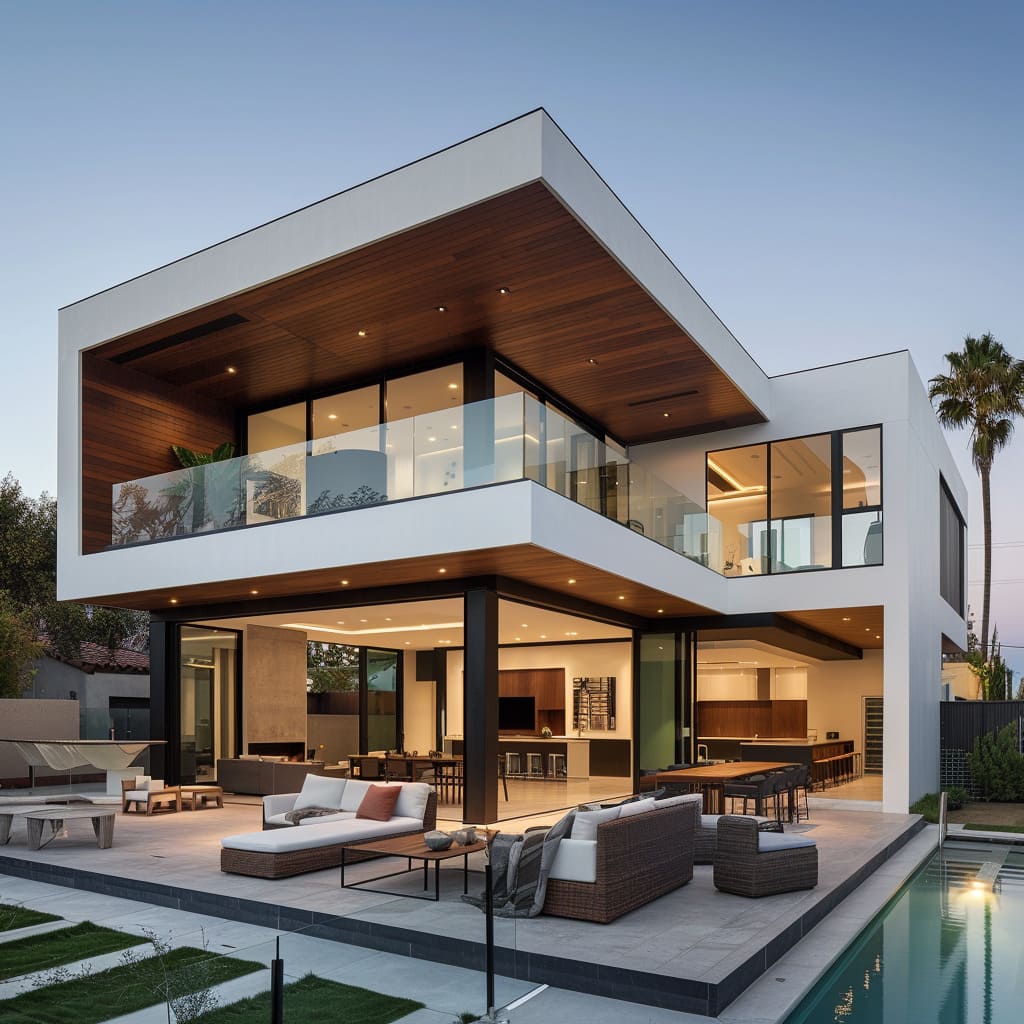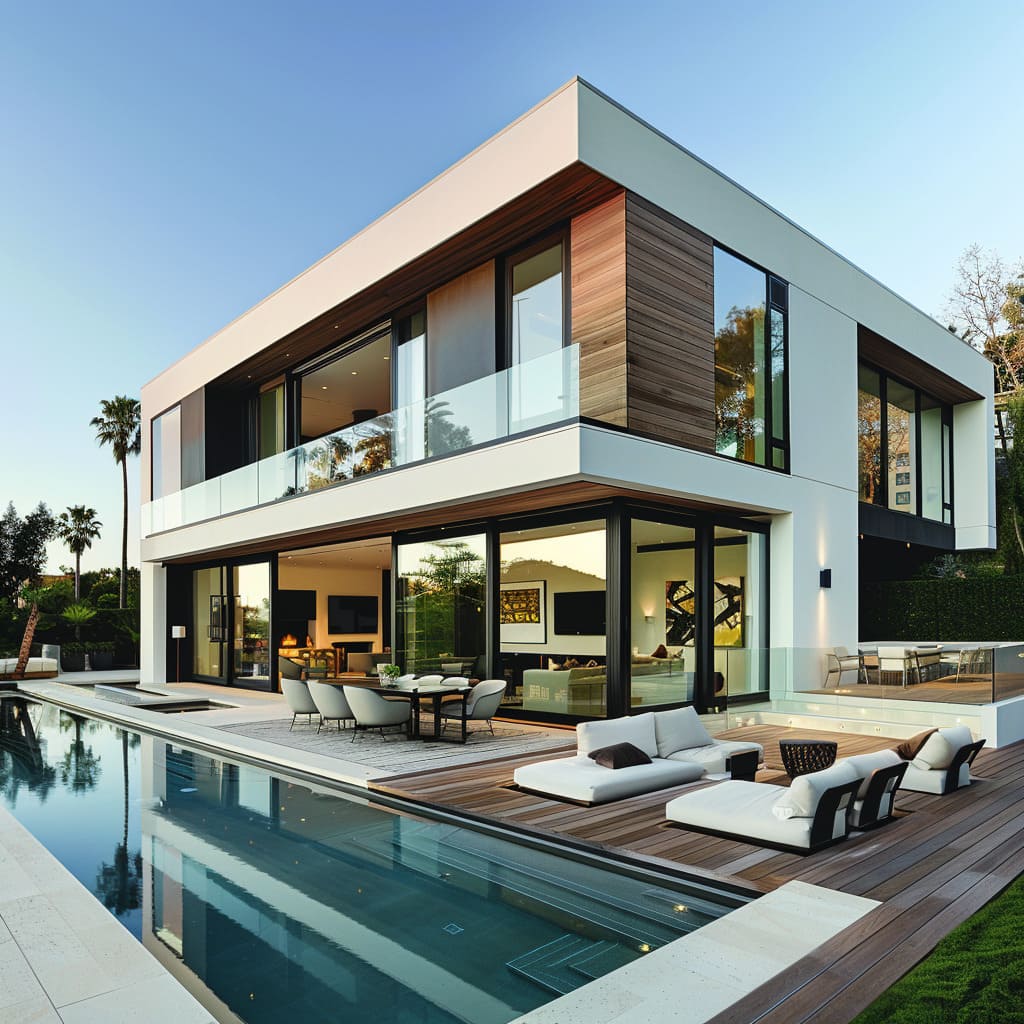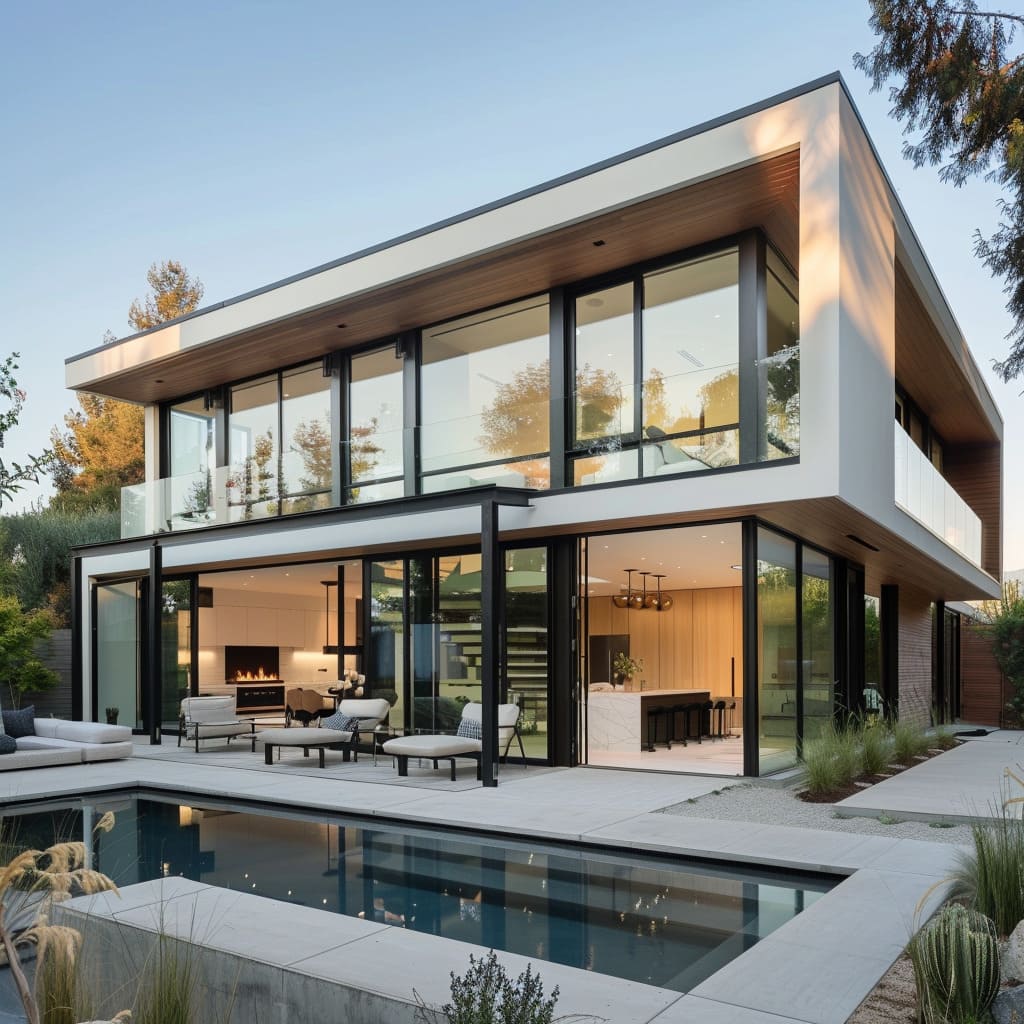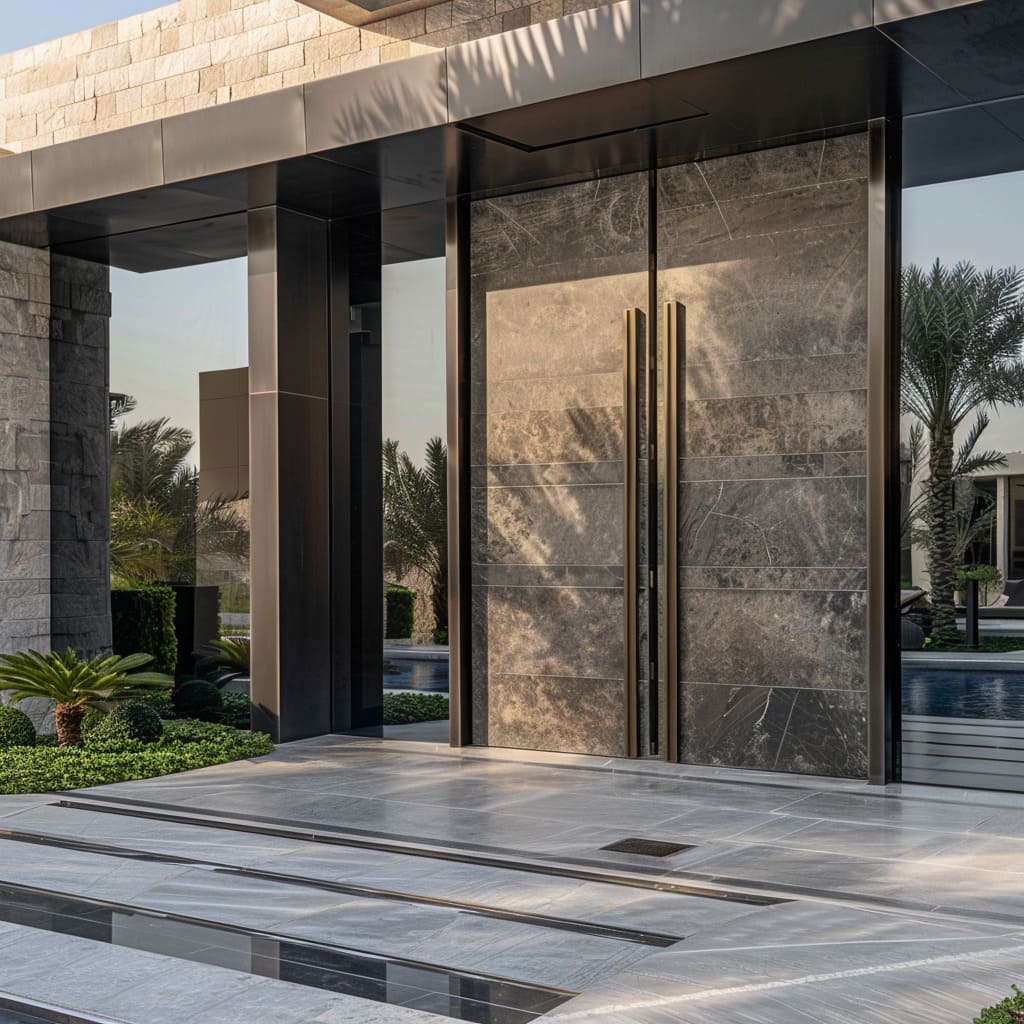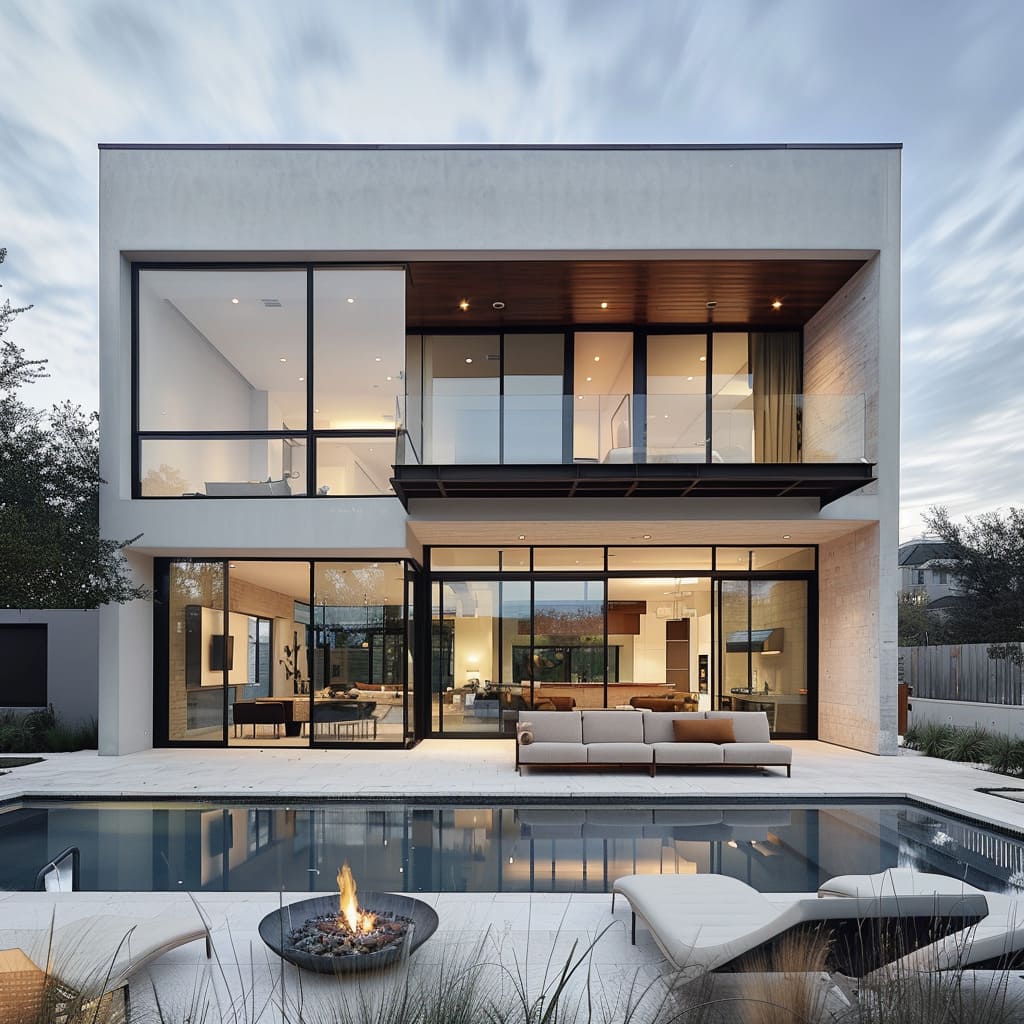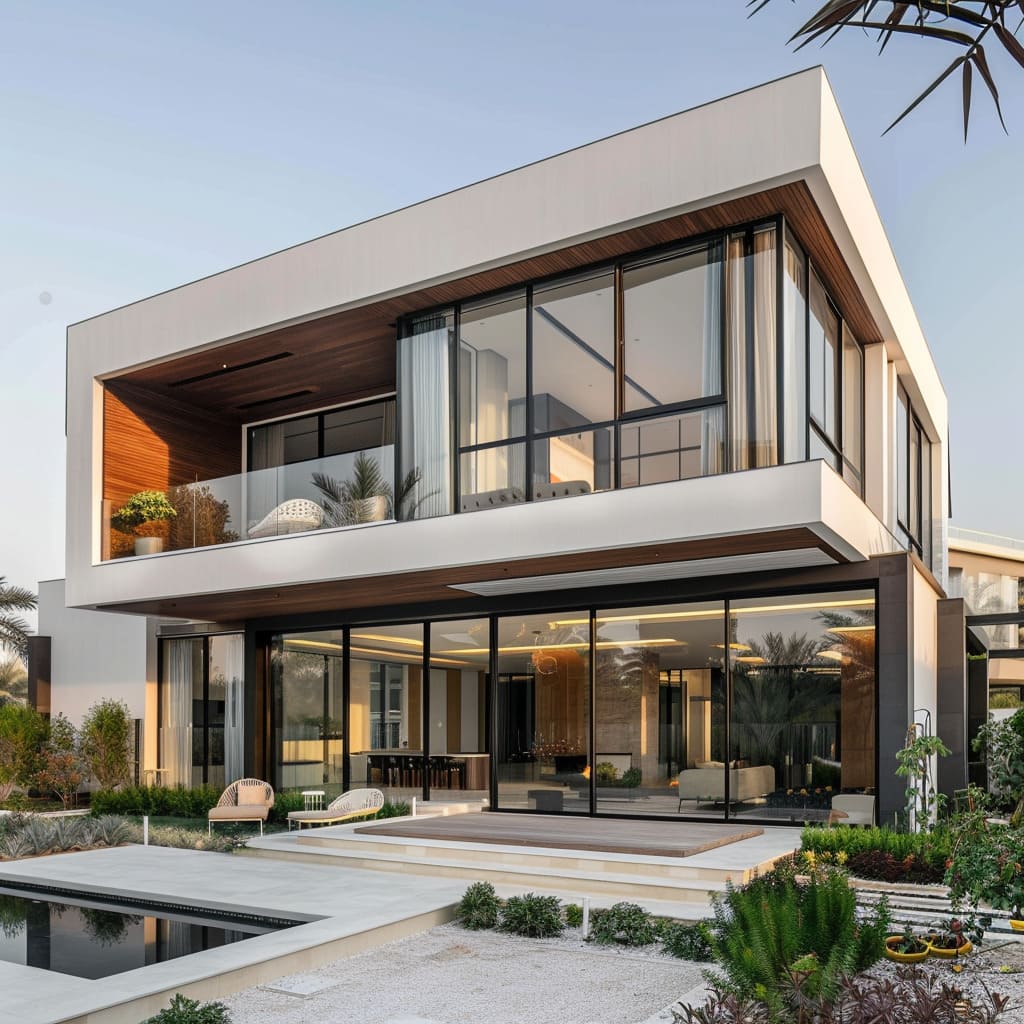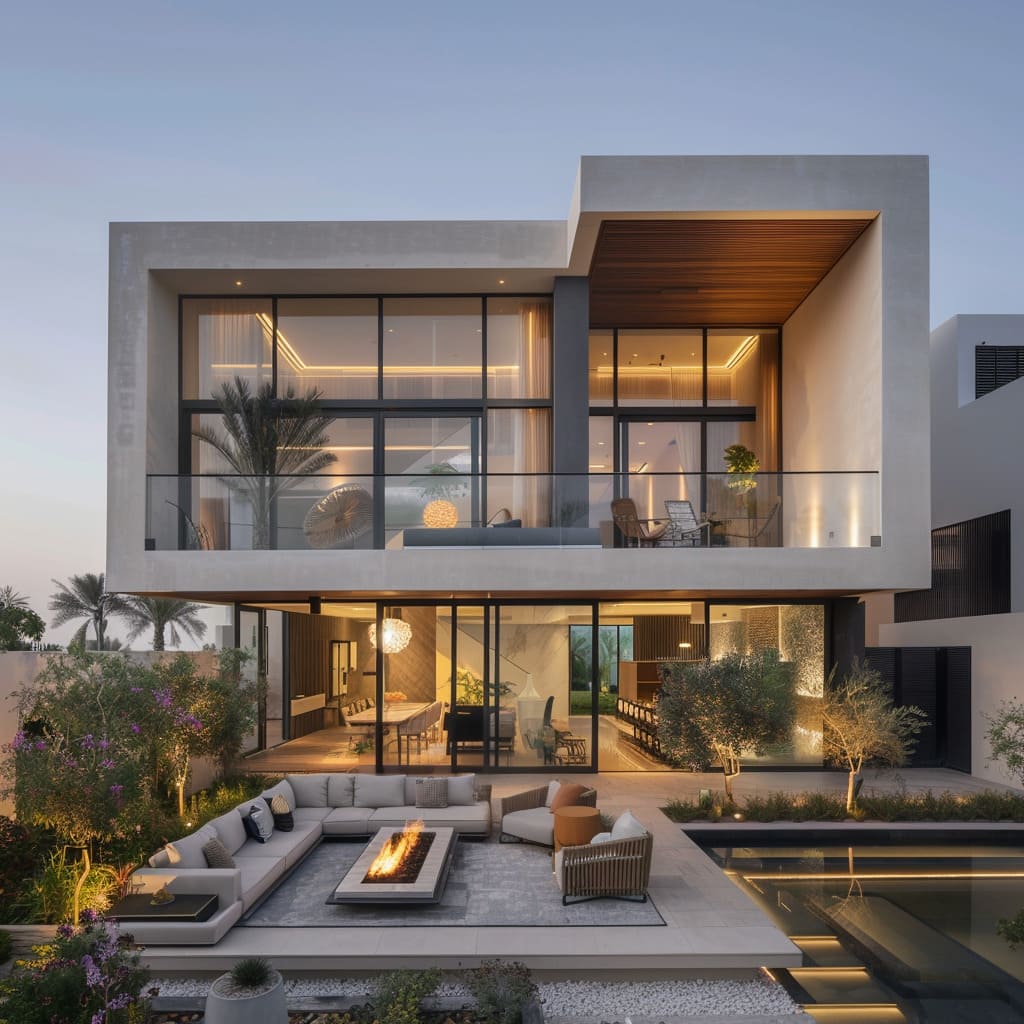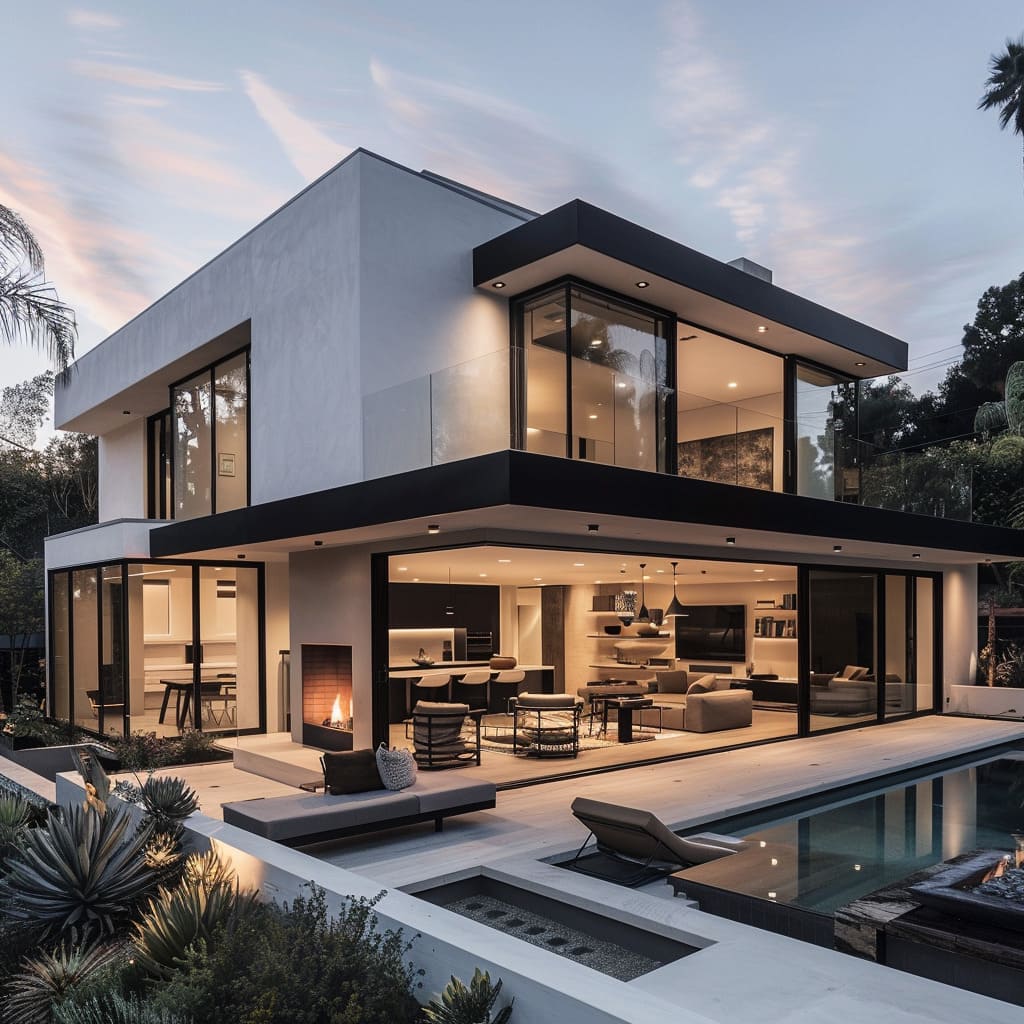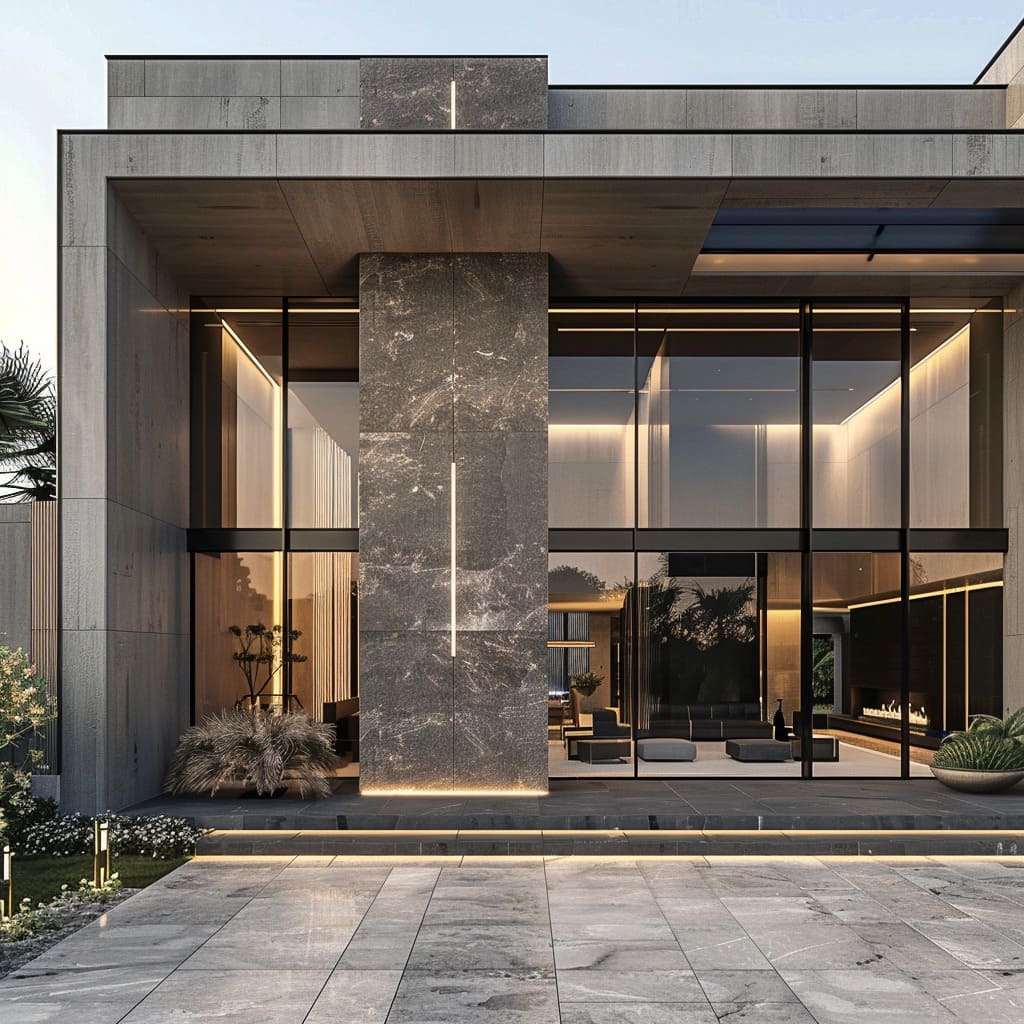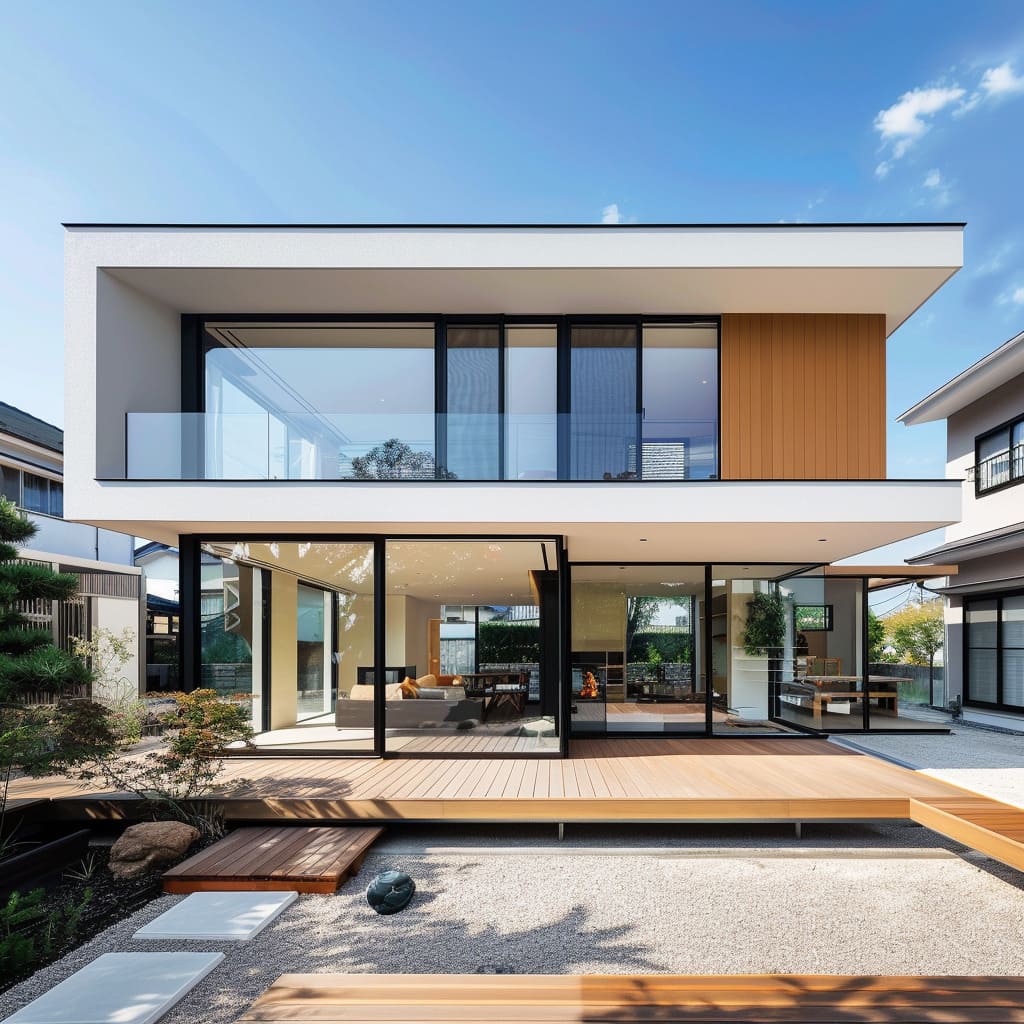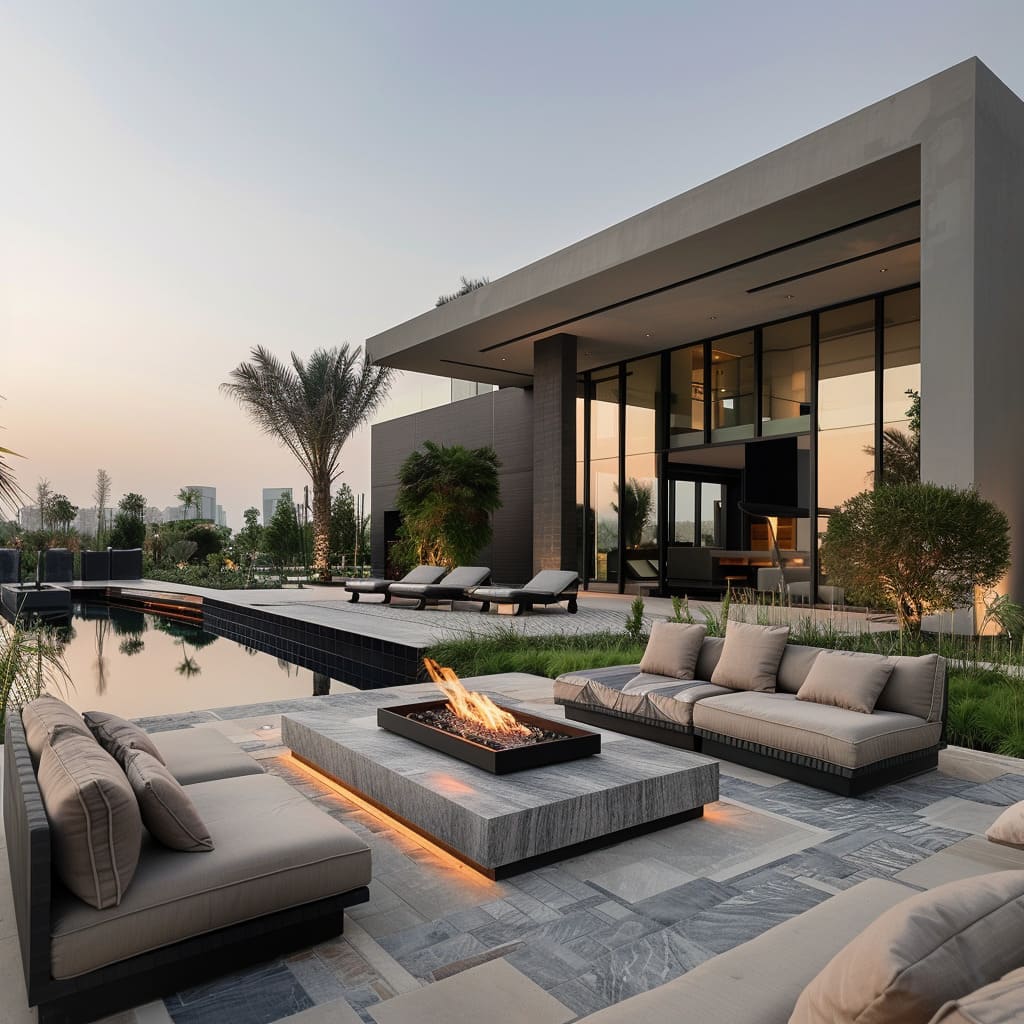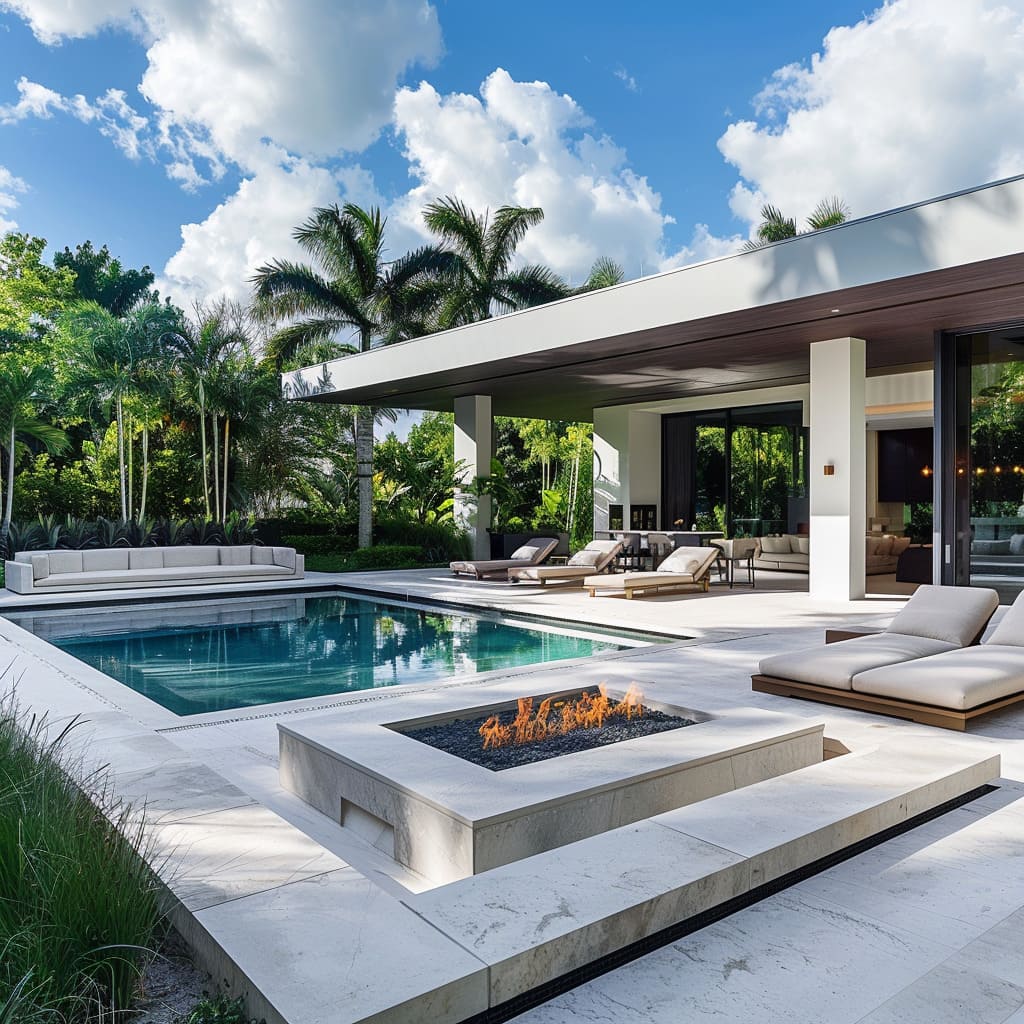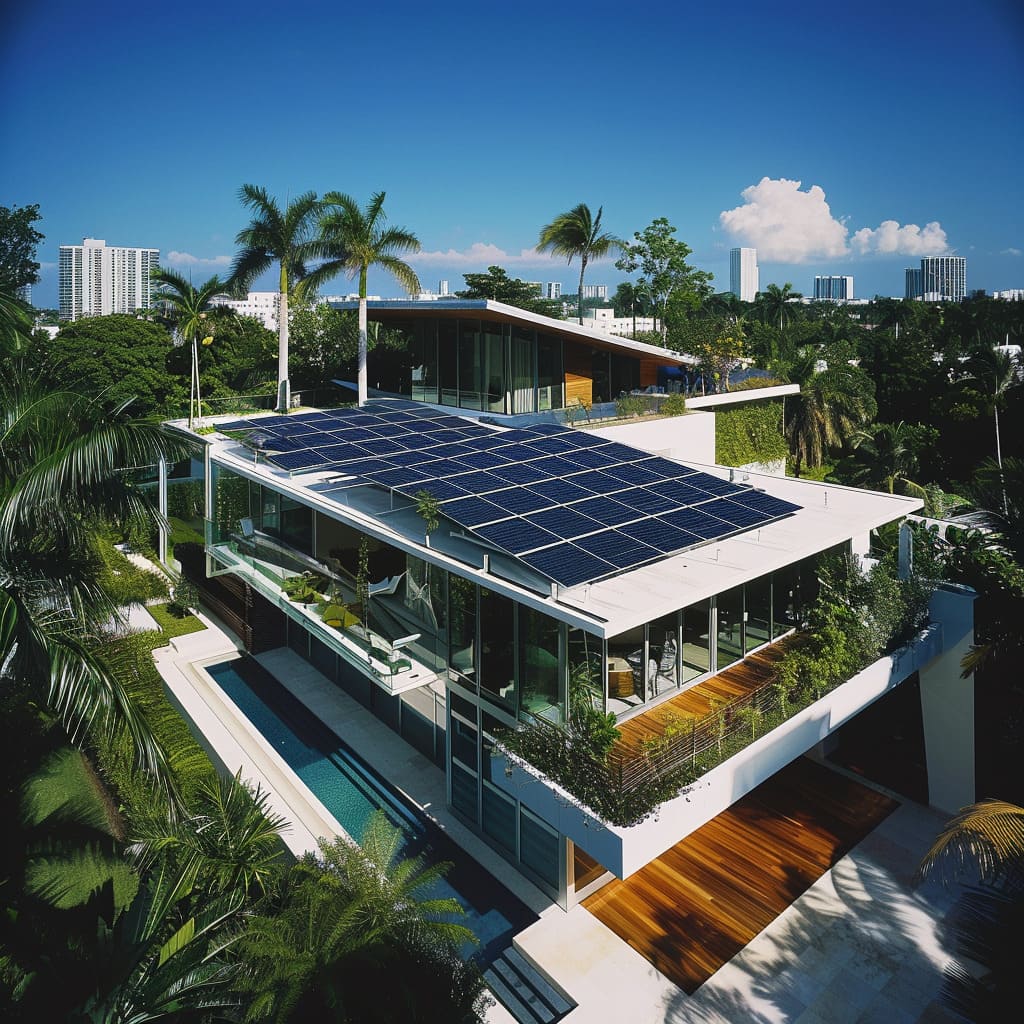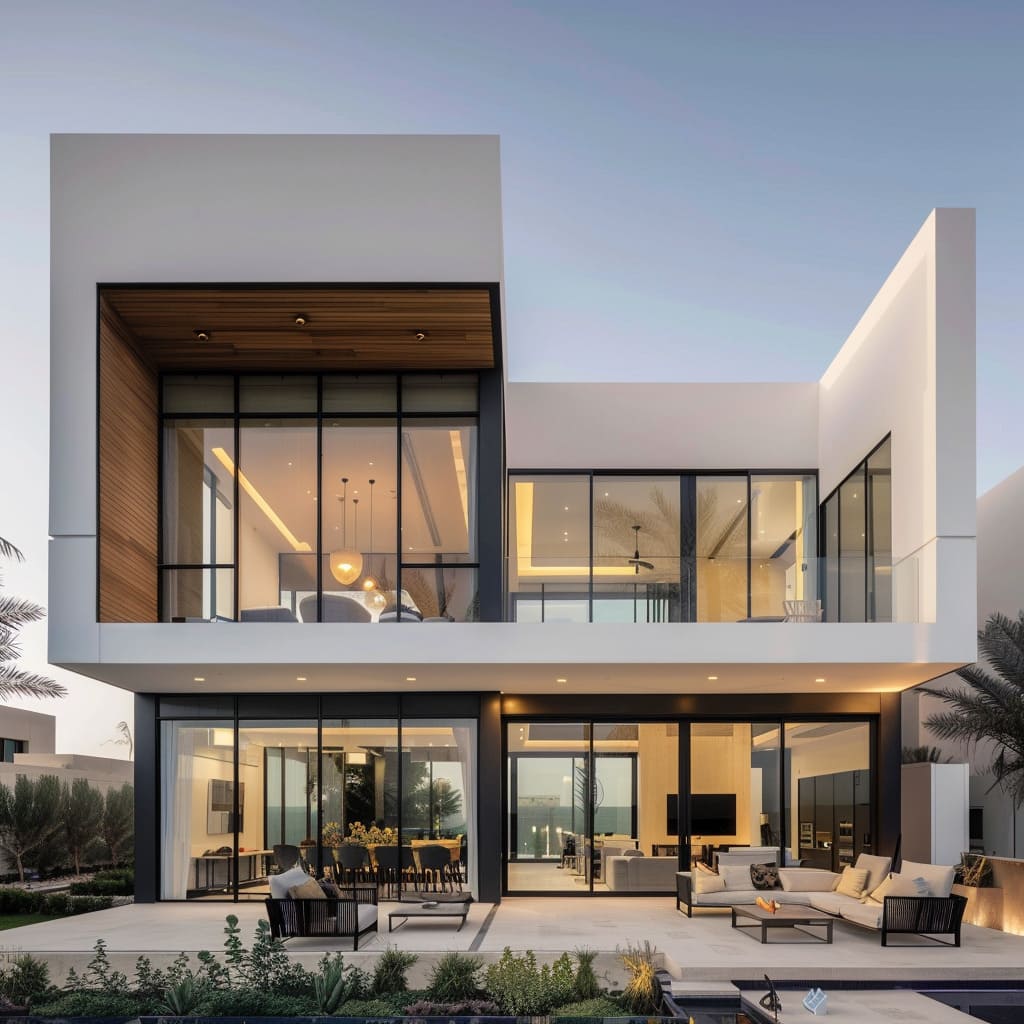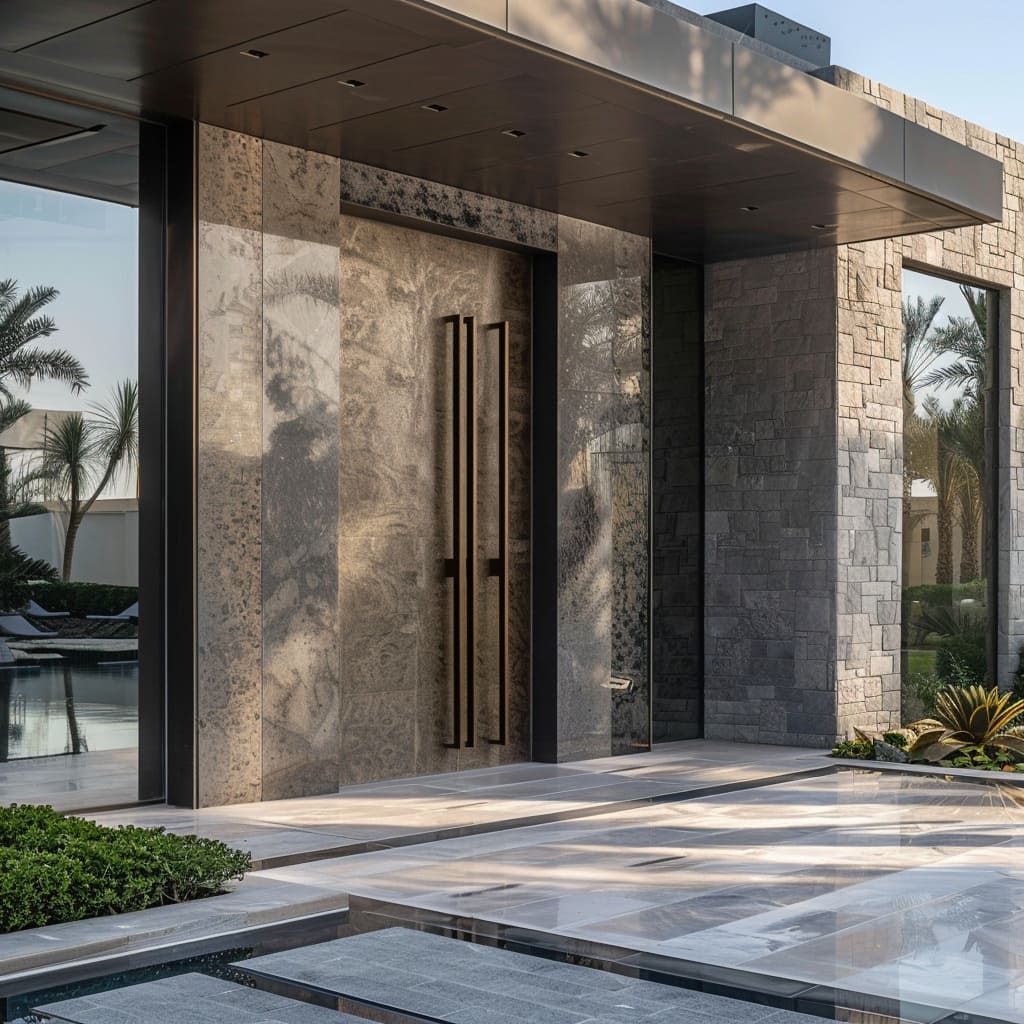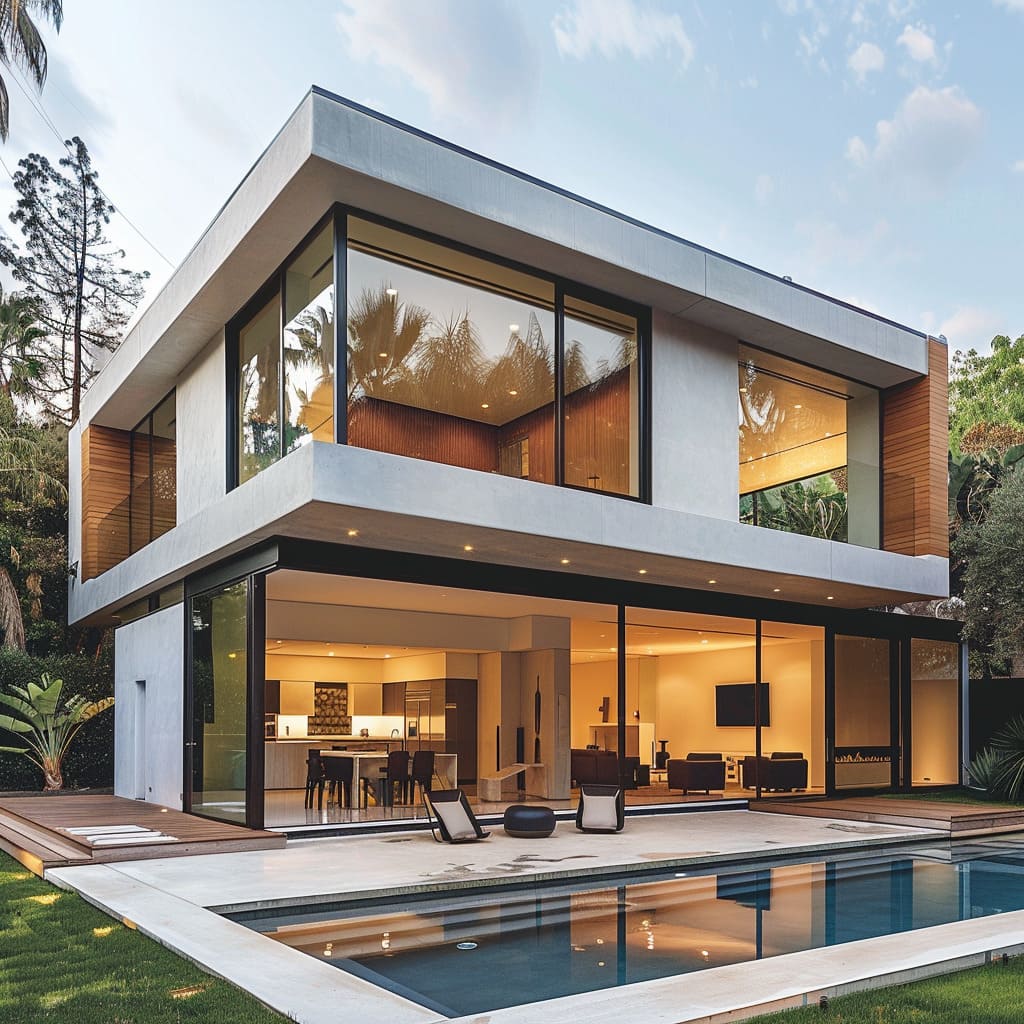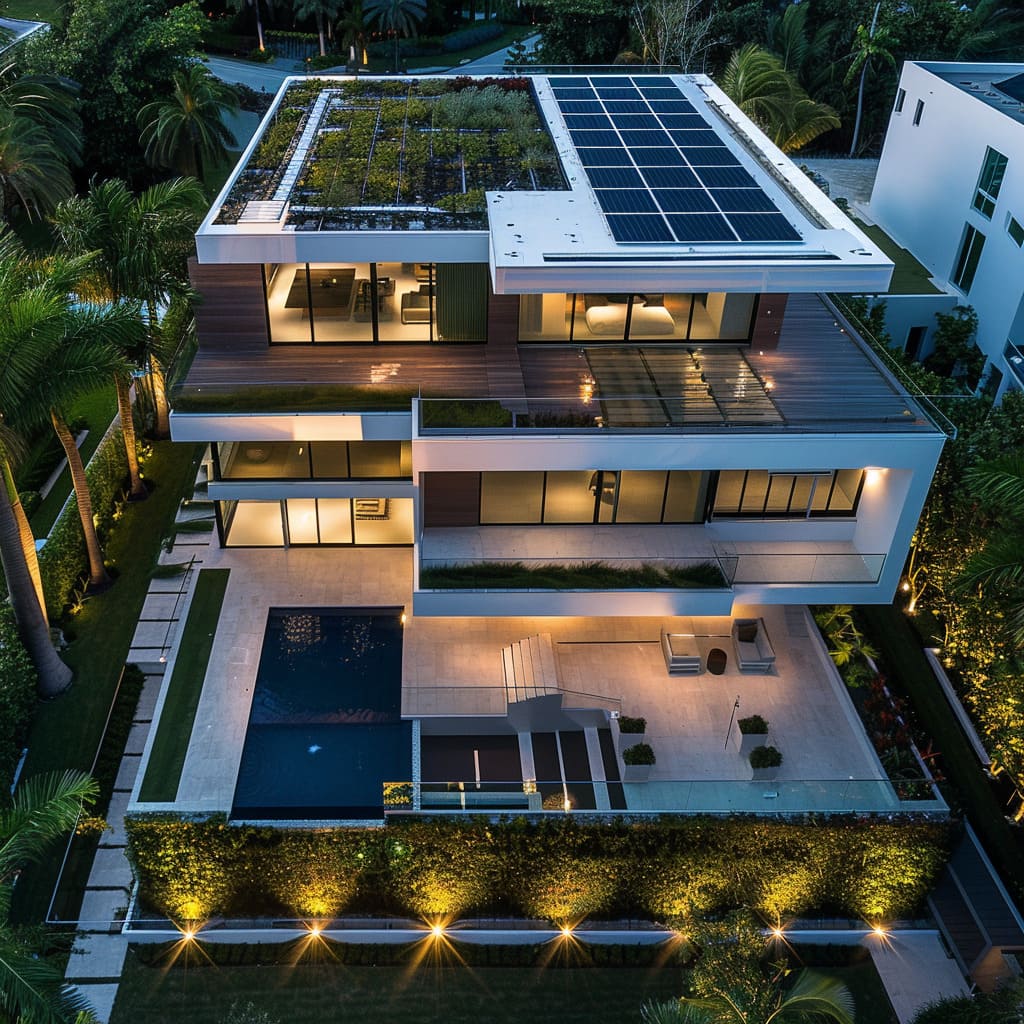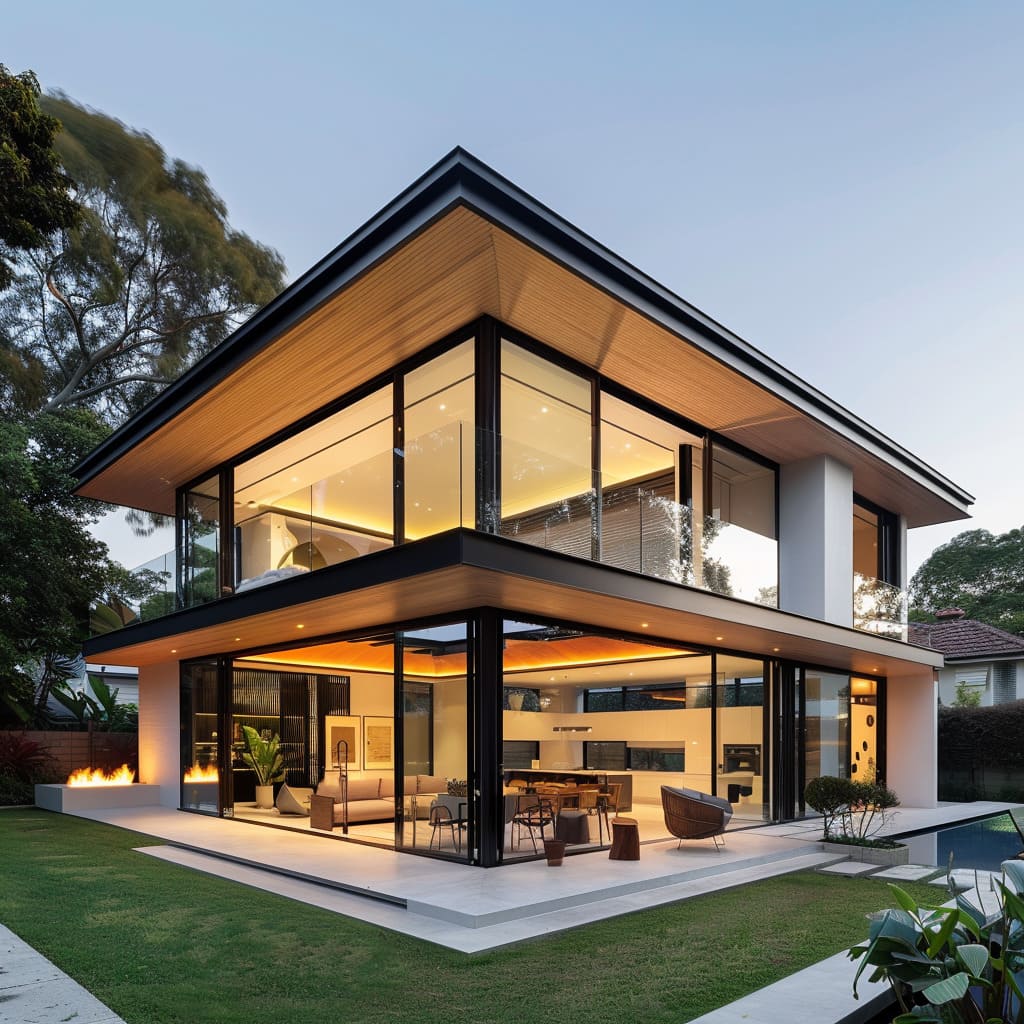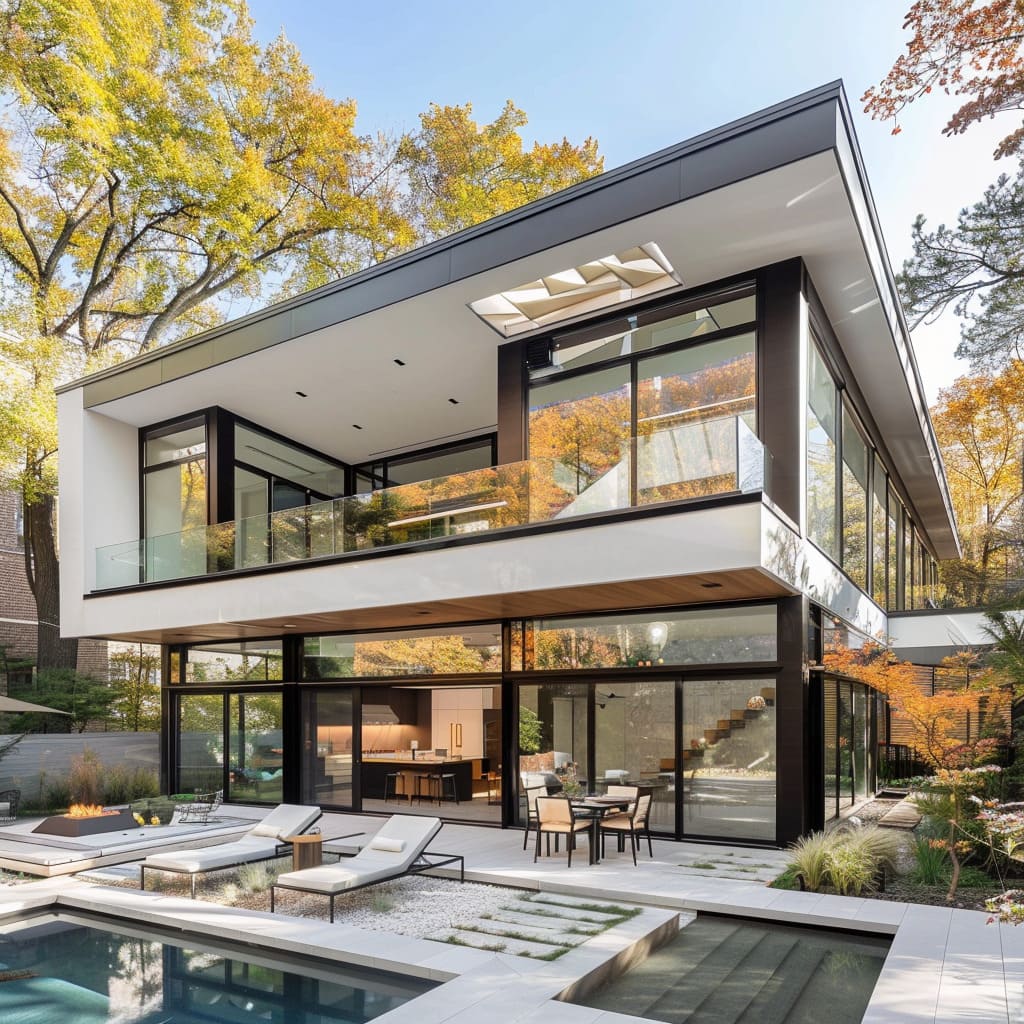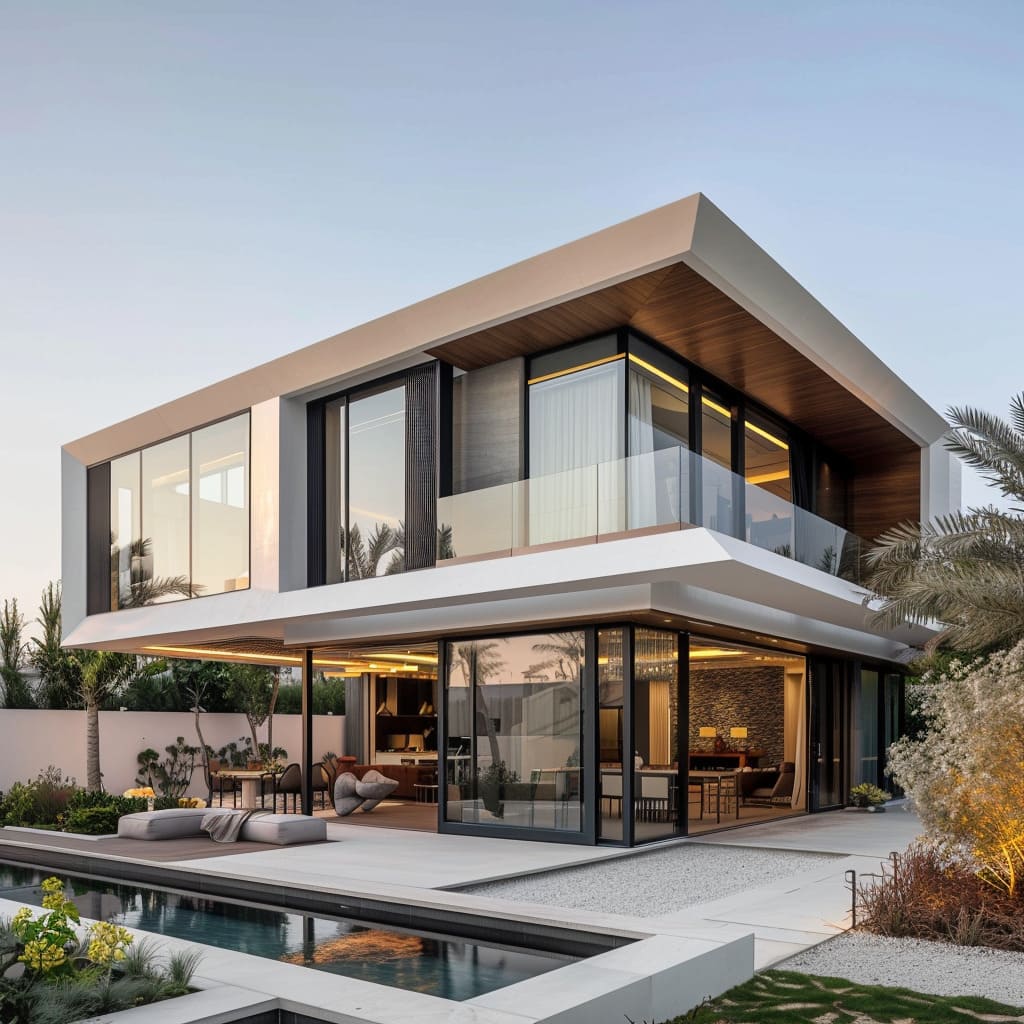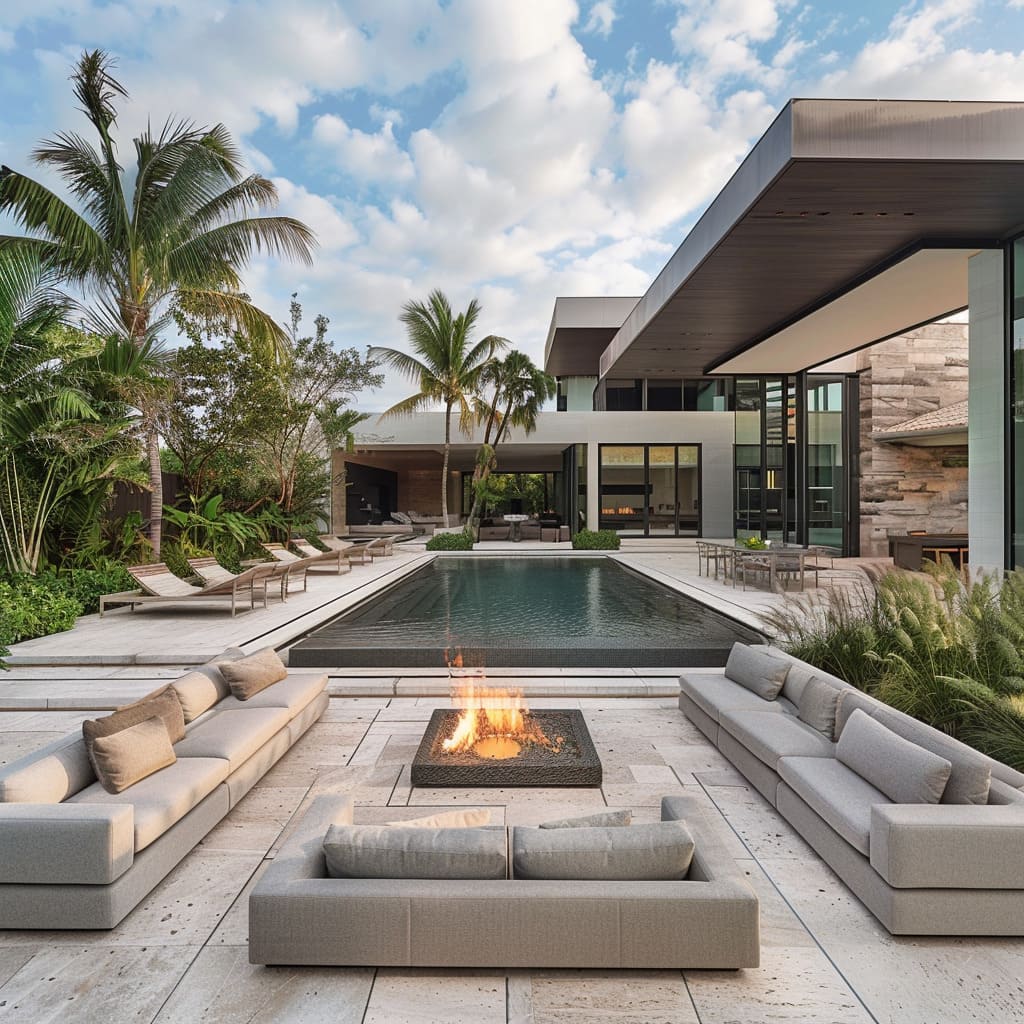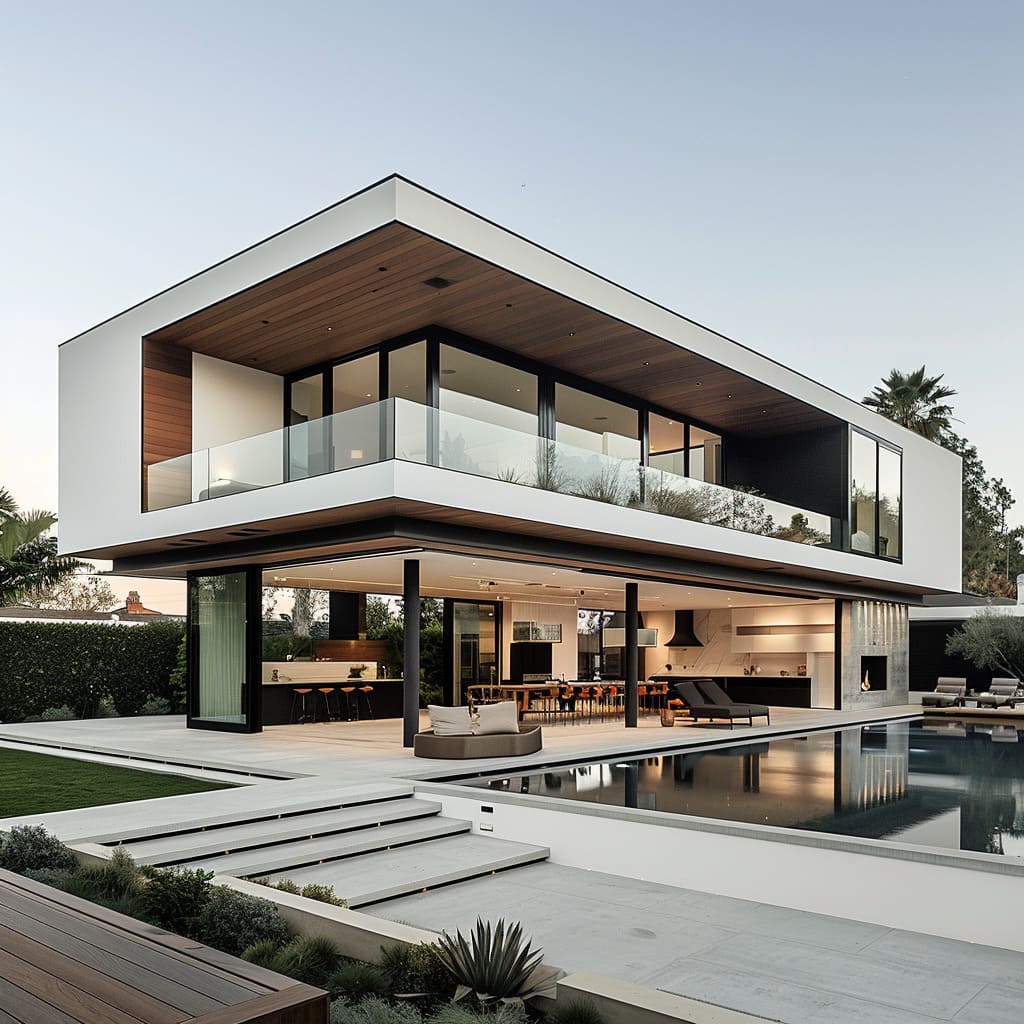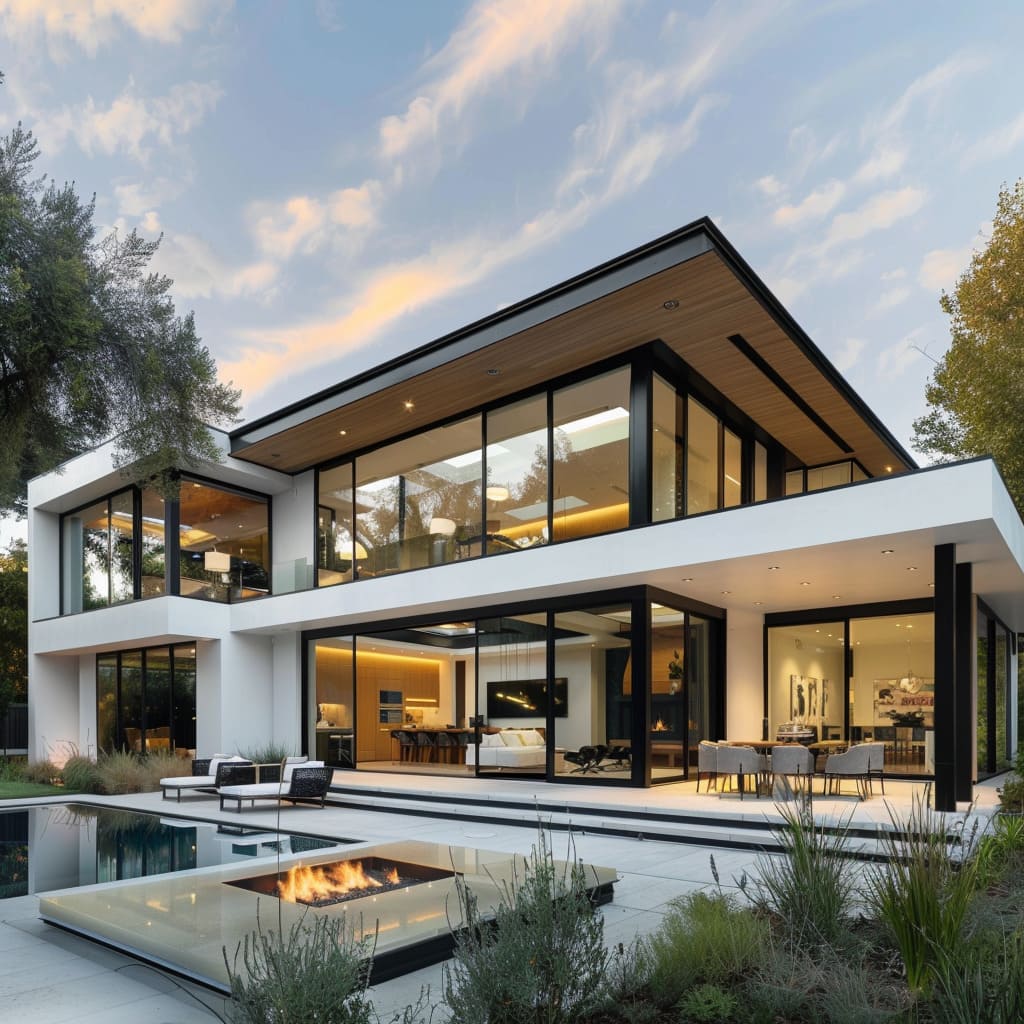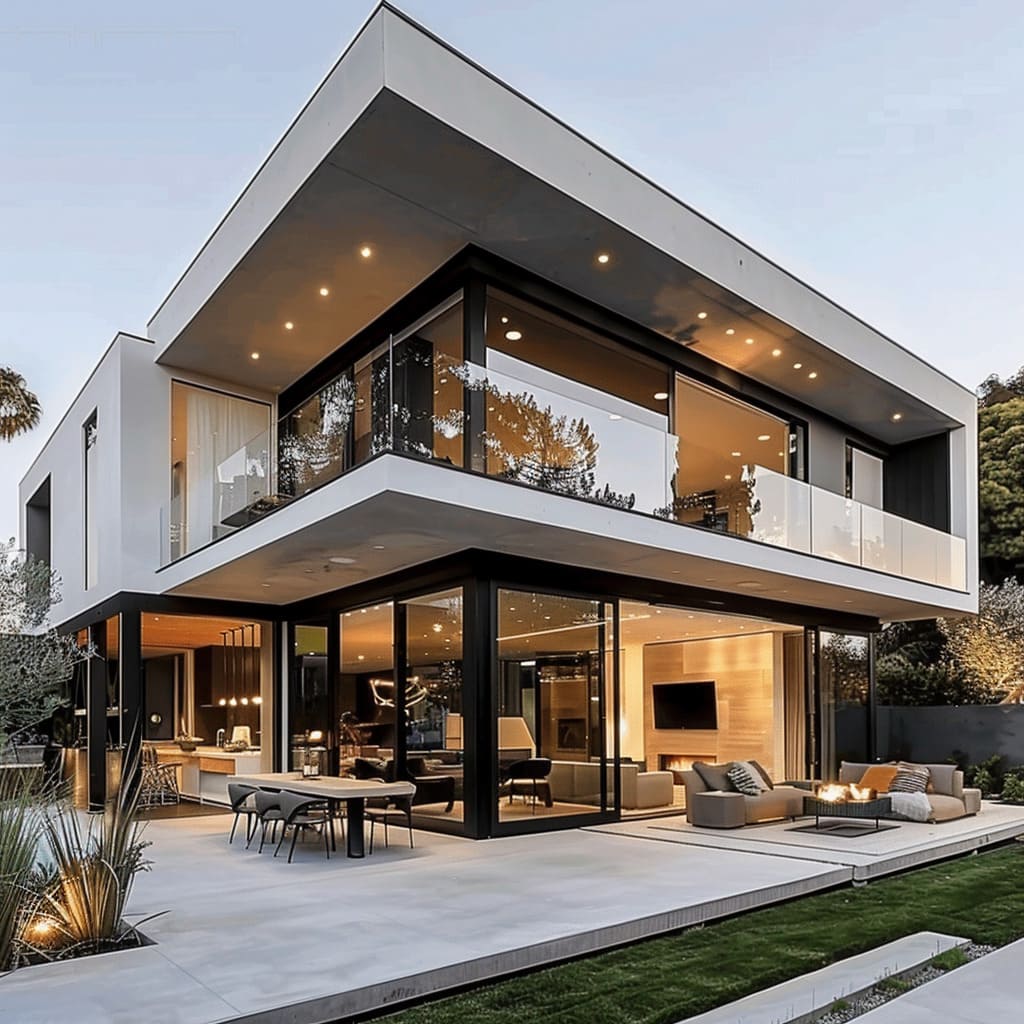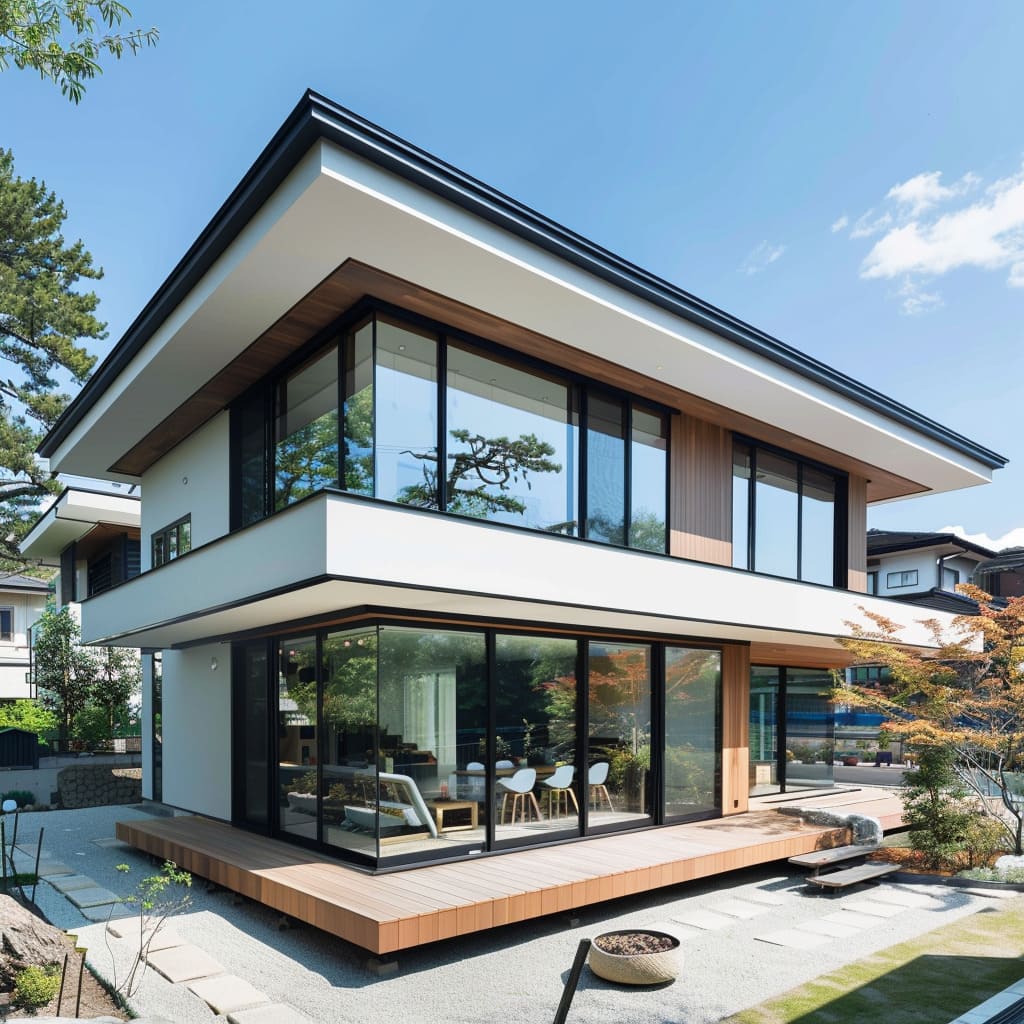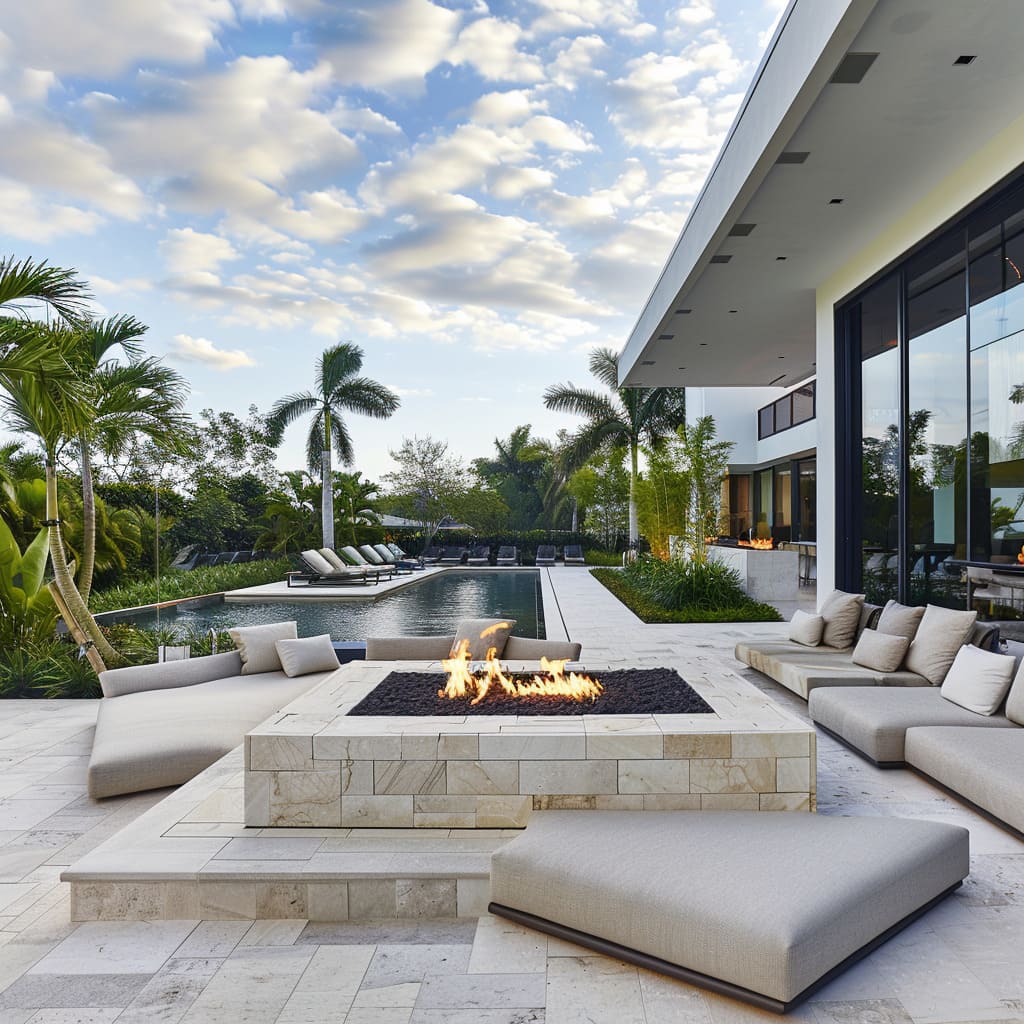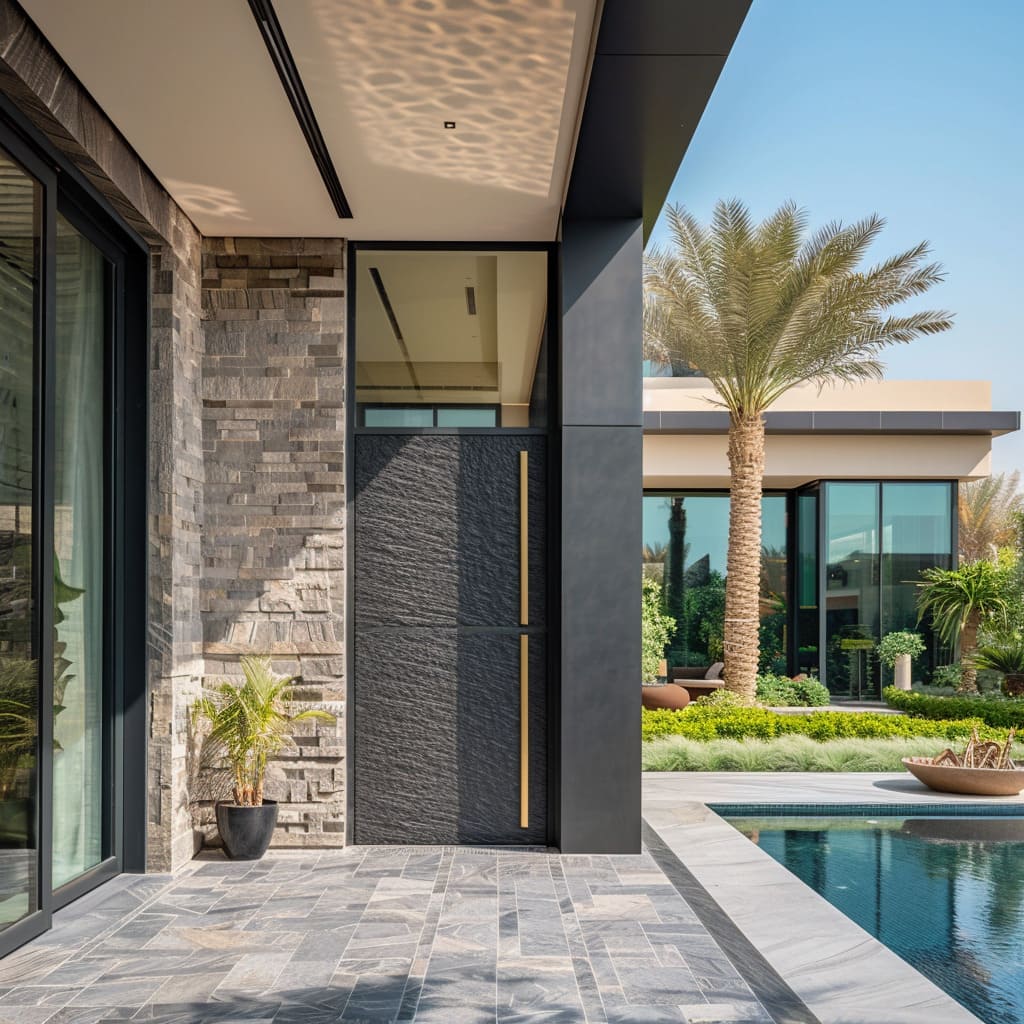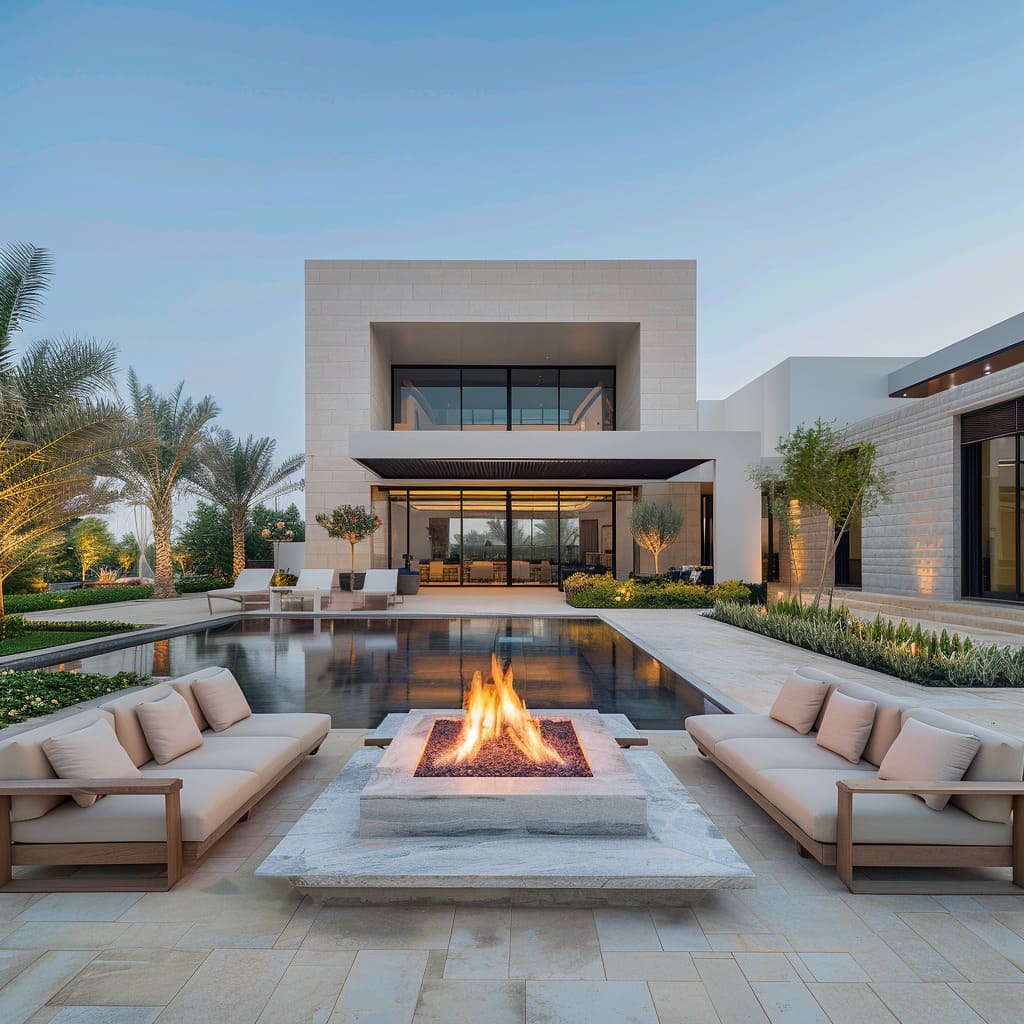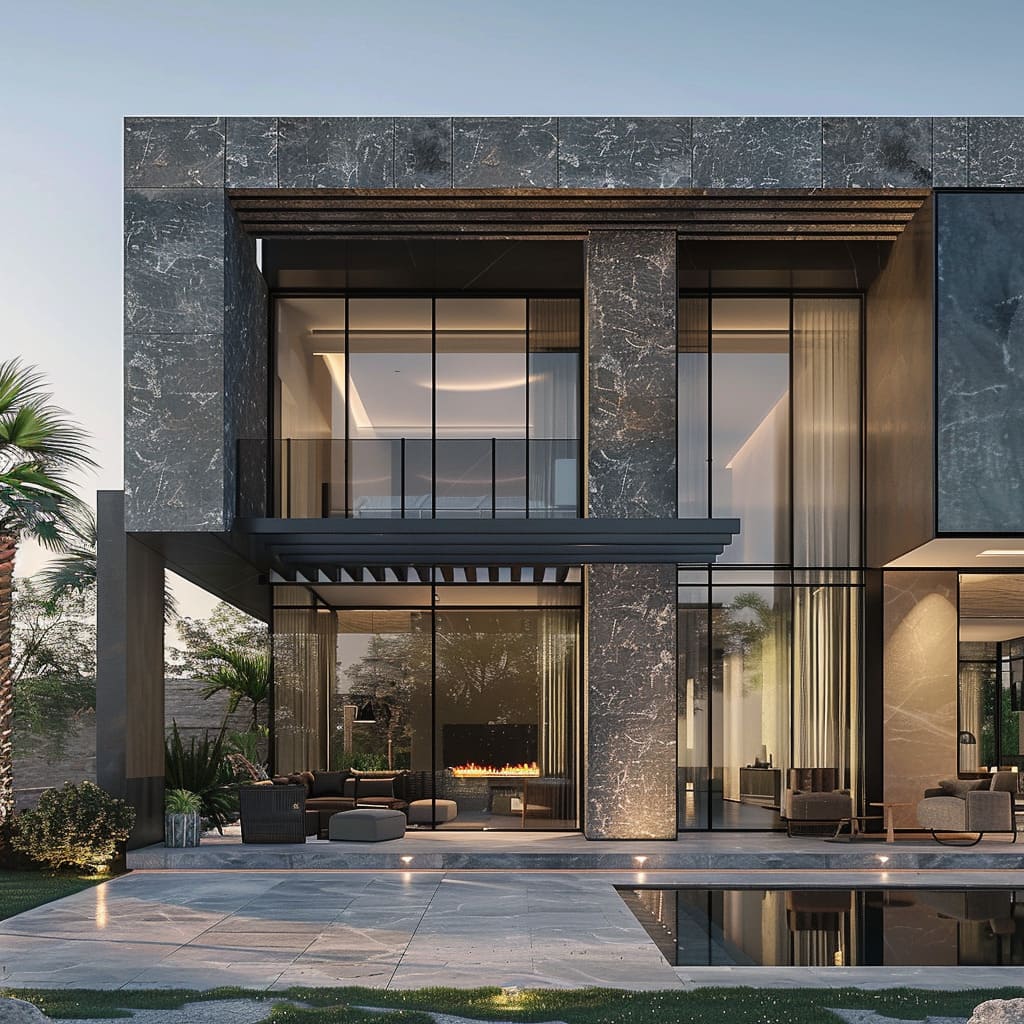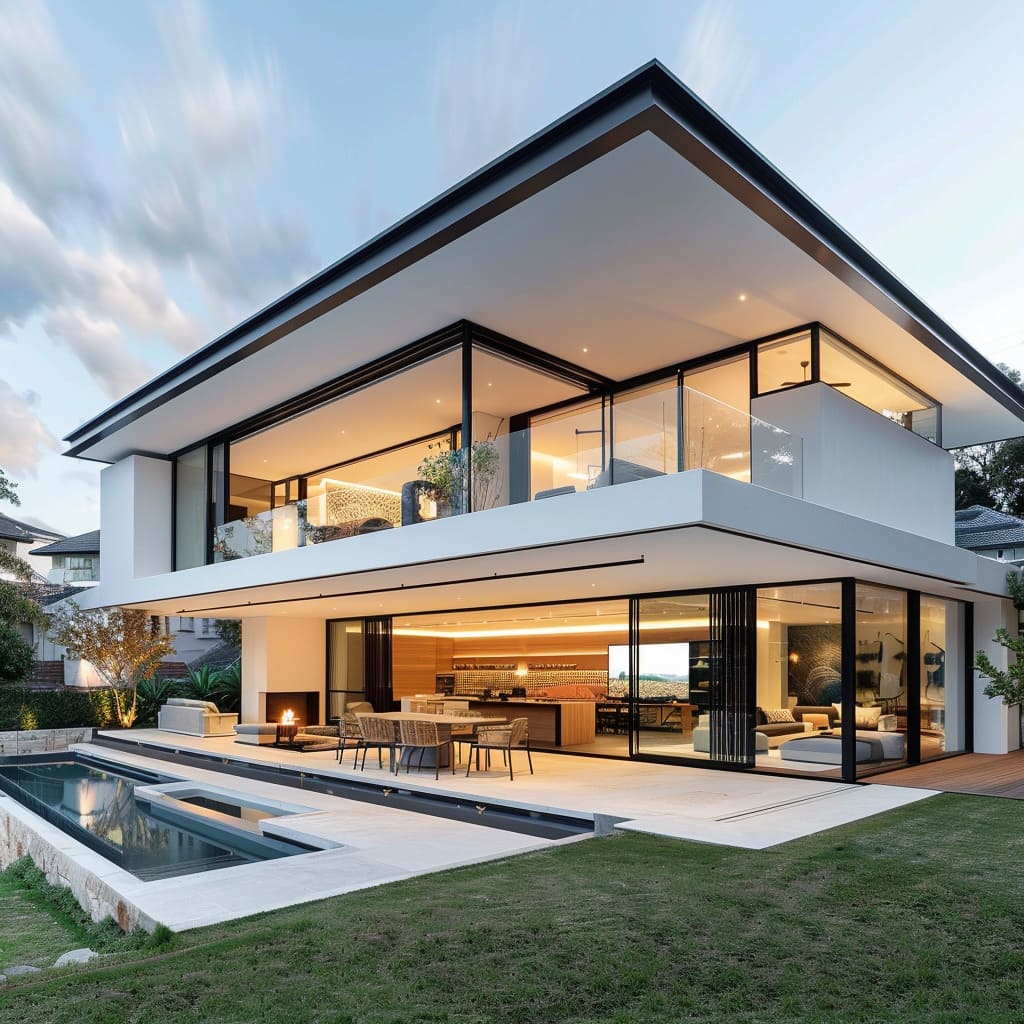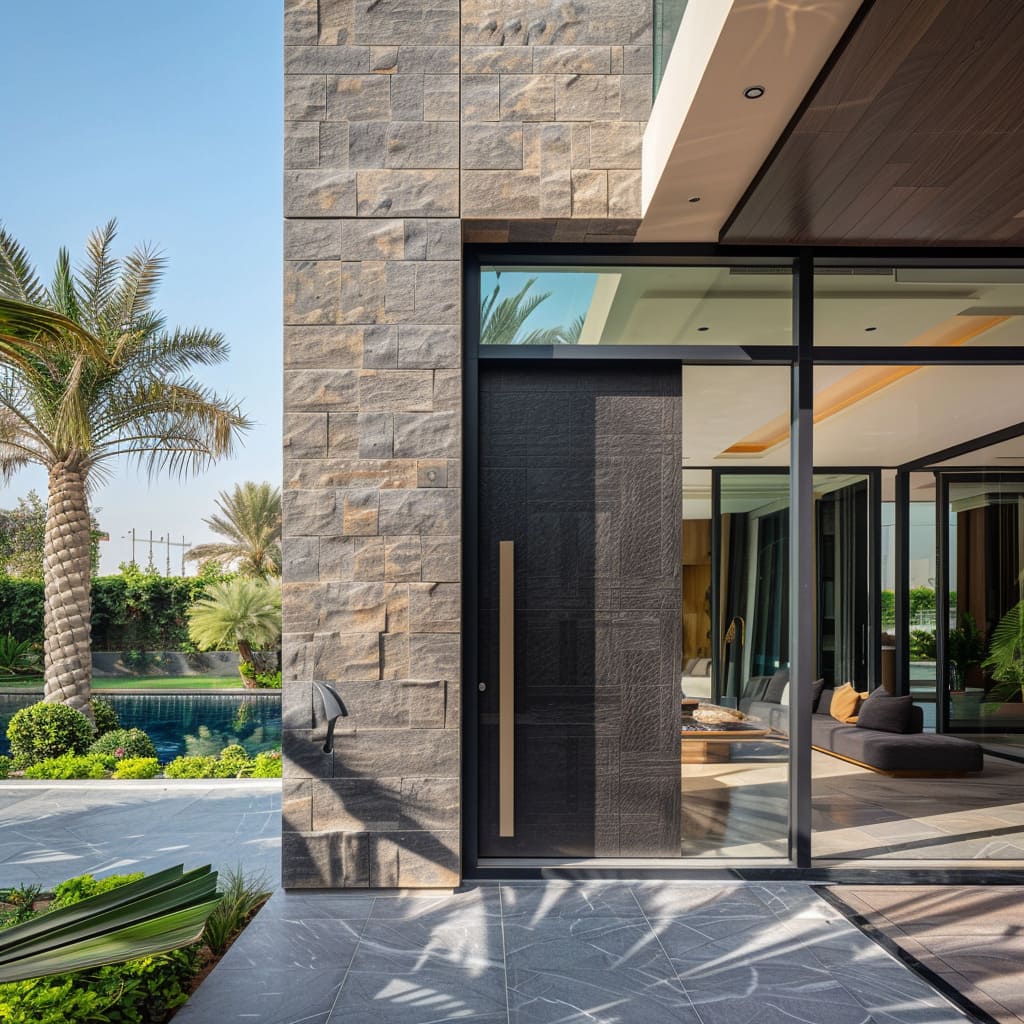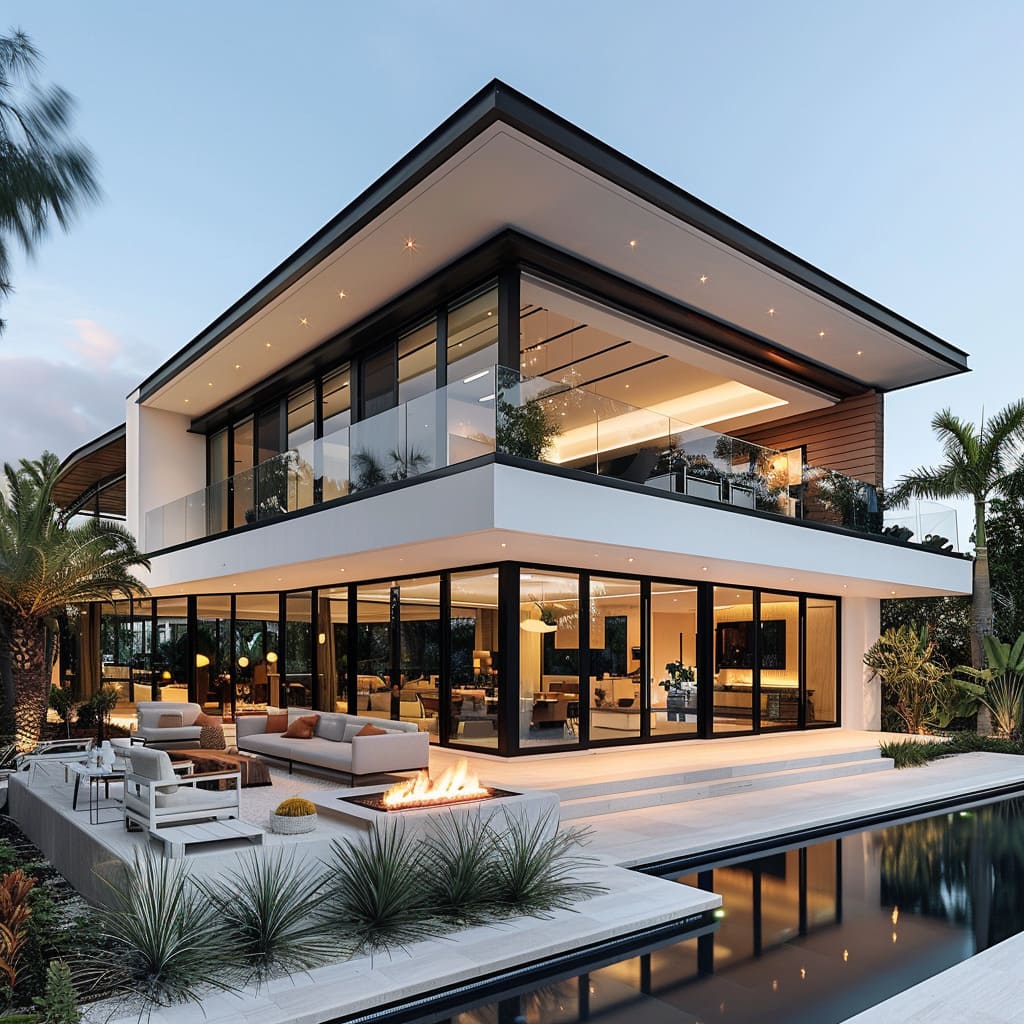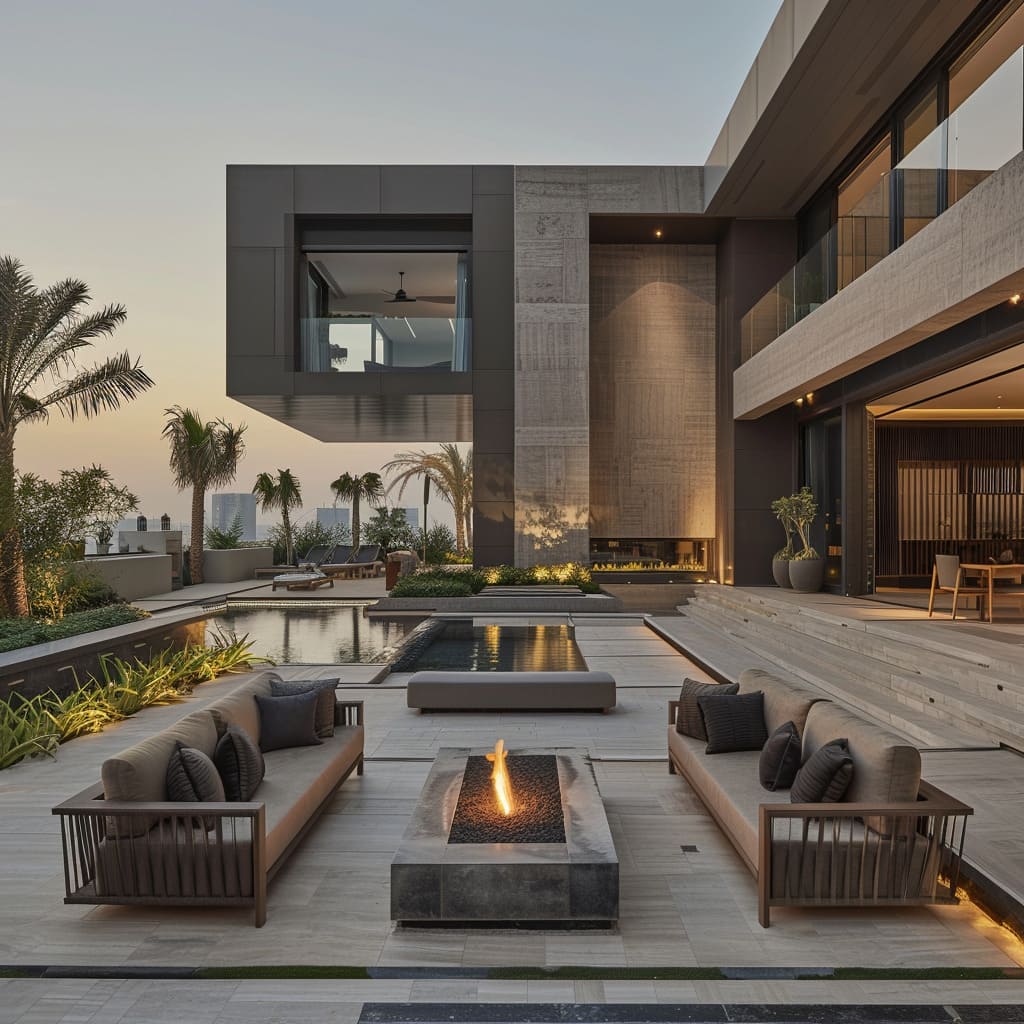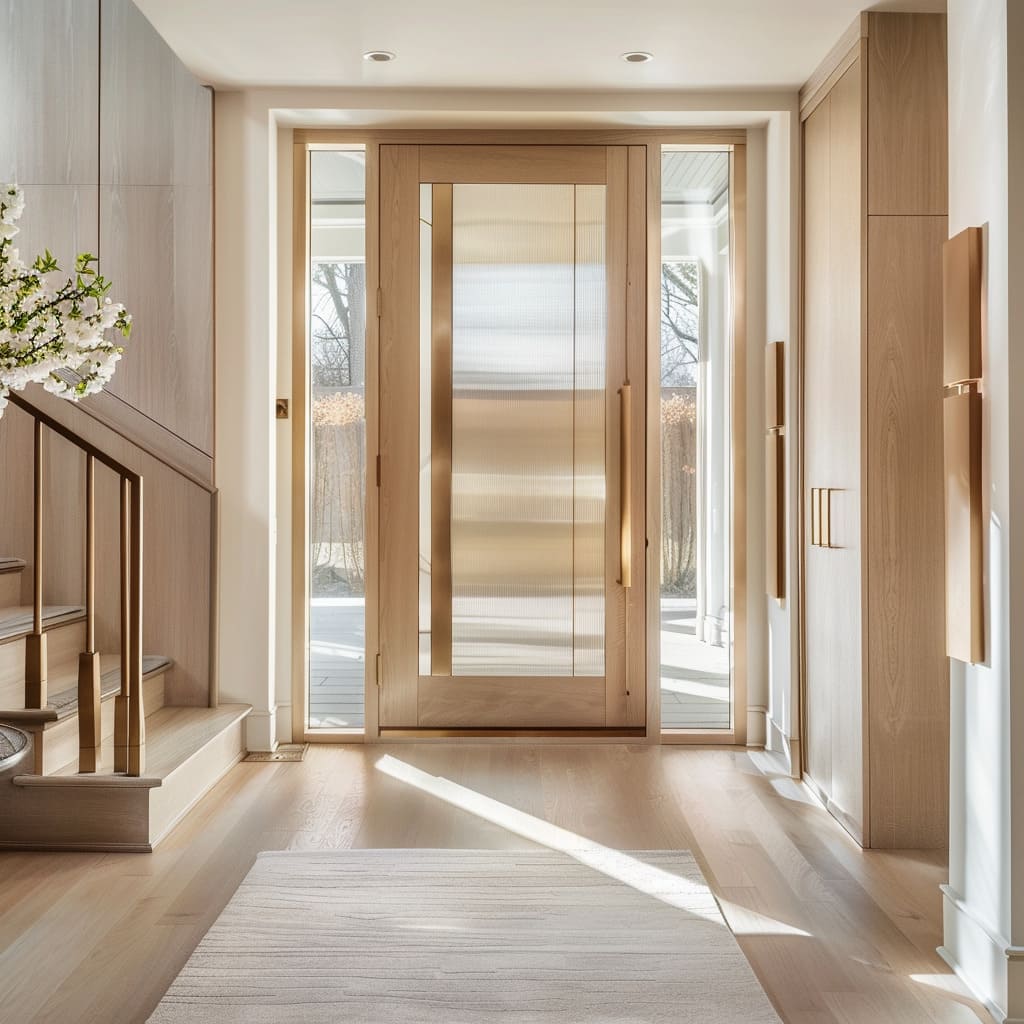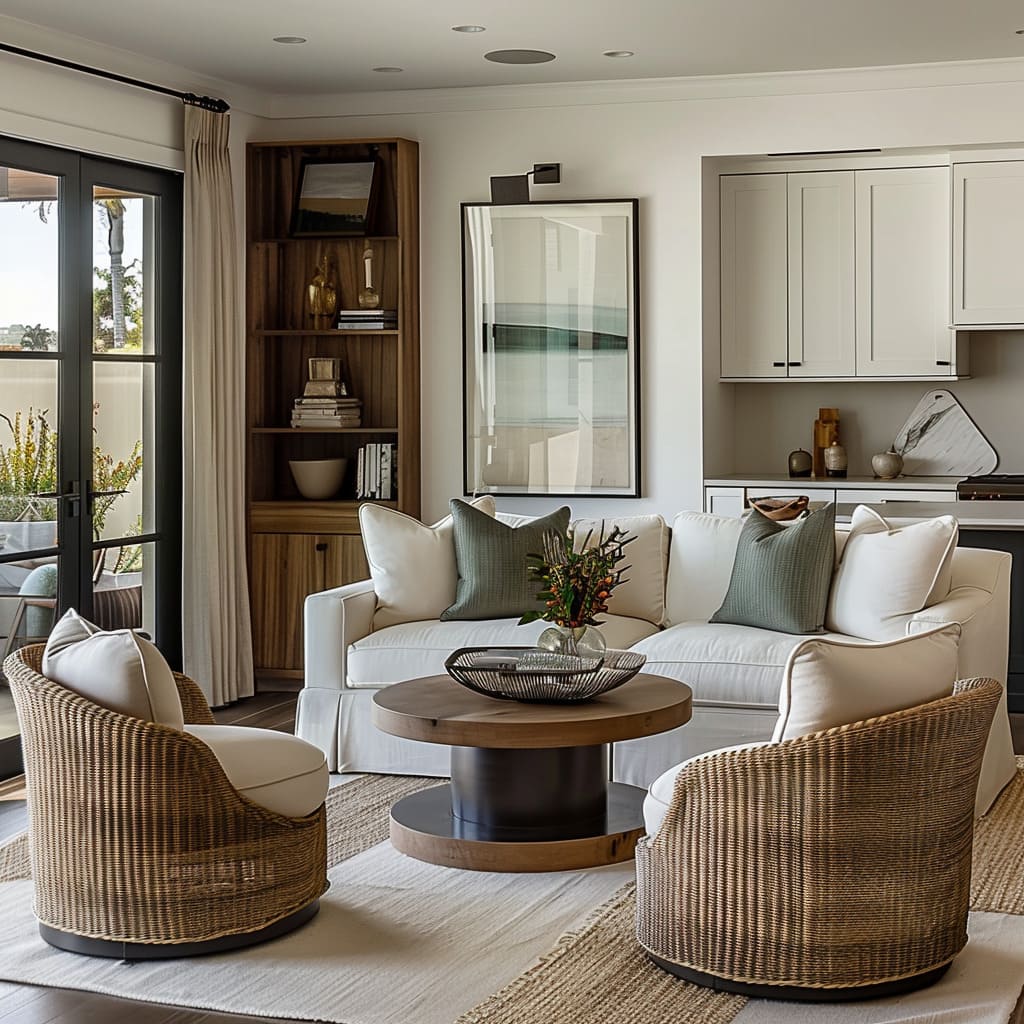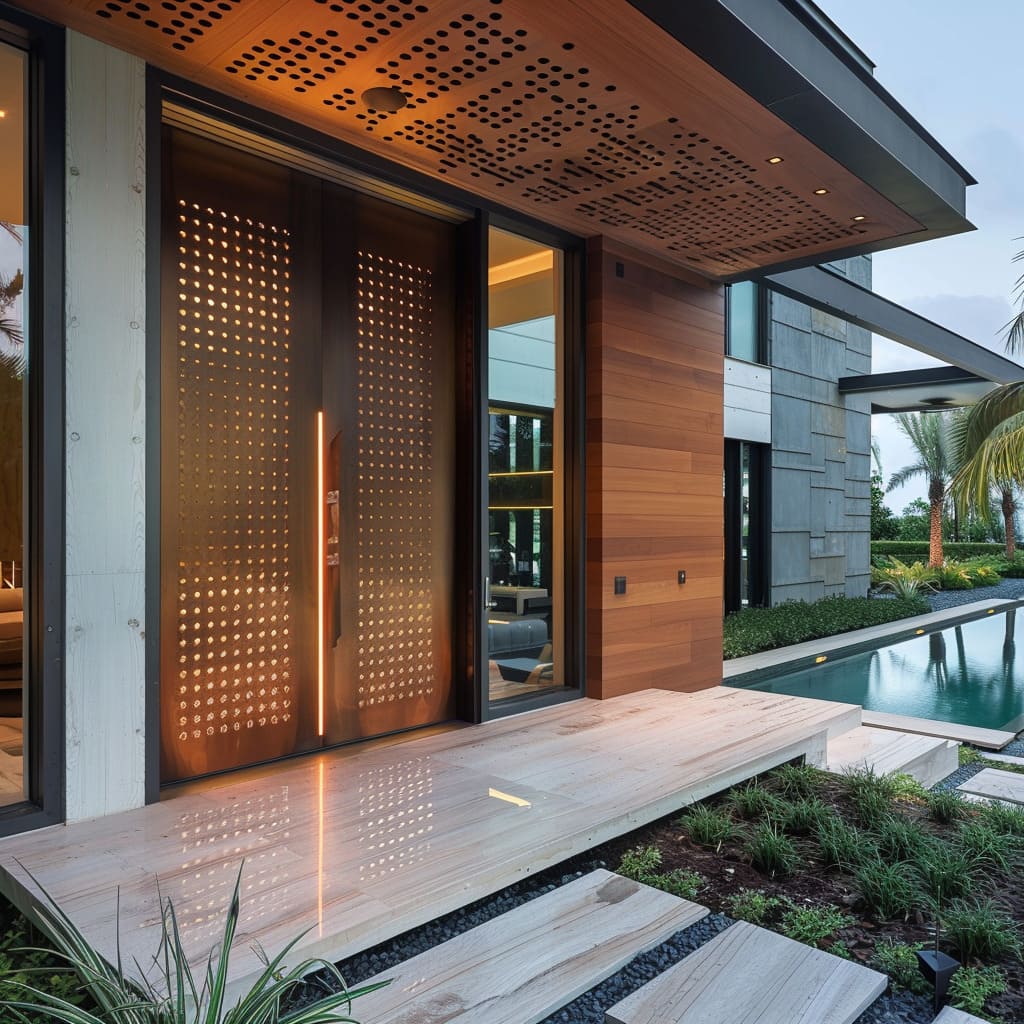Sustainable luxury is a concept that seamlessly integrates high-end living with environmentally conscious choices. This approach to design and construction is becoming increasingly relevant in modern villas, where the emphasis is not only on comfort and opulence but also on making responsible decisions for the planet.
Homeowners are now seeking ways to live luxuriously while minimizing their environmental impact. This trend is reshaping the architecture and design of modern villas, influencing everything from the choice of materials to the integration of nature with living spaces.
The appeal of sustainable luxury lies in its ability to balance aesthetics with functionality. It’s about creating homes that are not just beautiful and comfortable but also environmentally friendly and energy-efficient. The following sections explore how sustainable practices can be incorporated into the modern villa experience, covering aspects such as architectural design, outdoor living spaces, interior elements, lighting, and the integration of natural surroundings
Architectural Design
The architecture of a modern villa plays a crucial role in defining its character and functionality. A key aspect of sustainable luxury is the use of modern minimalist design principles, which emphasize simplicity, clean lines, and open spaces. These designs are not only visually appealing but also practical in terms of energy efficiency and environmental impact.
In a modern villa, the structure often features large, geometric forms that create a striking presence. The use of sustainable building materials is essential in this context. Recycled stone, reclaimed wood, and energy-efficient glass are commonly used materials that offer both durability and an aesthetically pleasing appearance.
These materials reduce the villa’s carbon footprint while providing a sense of permanence and solidity.
One of the most significant aspects of modern villa architecture is the seamless integration of indoor and outdoor spaces. Large, floor-to-ceiling glass walls and doors allow natural light to flood the interior, reducing the need for artificial lighting during the day. This design also provides uninterrupted views of the surrounding landscape, enhancing the sense of openness and connection with nature.
How do modern villas that prioritize sustainability address the challenges of energy efficiency in climates with extreme weather conditions, such as very hot or very cold environments?
Modern villas that prioritize sustainability in extreme weather conditions, whether very hot or cold, use several strategies to address energy efficiency challenges.
These strategies often blend traditional architectural wisdom with cutting-edge technology to create comfortable and energy-efficient living spaces
Passive design principles involve optimizing the building’s orientation, insulation, and materials to reduce the need for artificial heating or cooling. In hot climates, villas might be oriented to minimize direct sun exposure, with deep overhangs or pergolas to provide shade.
Large windows may be strategically placed to catch breezes while avoiding harsh sunlight. In colder climates, villas are often designed to maximize solar gain, with south-facing windows and well-insulated walls to retain heat
For both hot and cold climates, advanced insulation is key. Insulating materials with high R-values (resistance to heat flow) are used in walls, roofs, and floors to maintain a stable indoor temperature.
Energy-efficient glazing, such as double or triple-pane windows with low-emissivity coatings, helps keep heat out in the summer and retain warmth in the winter.
Sustainable villas in extreme climates often use high-efficiency heating, ventilation, and air conditioning (HVAC) systems. In cold climates, heat pumps, which can efficiently heat and cool a home, are popular. In hot climates, energy-efficient air conditioning systems that use less power and smart thermostats that optimize usage are common. To reduce dependency on traditional energy sources, modern villas may integrate renewable energy systems like solar panels or geothermal heating and cooling. Solar panels are particularly effective in sunny, hot climates, providing a sustainable energy source that can power the villa’s cooling systems.
In colder climates, geothermal systems can provide stable, efficient heating by leveraging the earth’s consistent underground temperature.
Smart home systems can significantly improve energy efficiency in extreme climates. These systems can automatically adjust lighting, heating, and cooling based on real-time conditions, ensuring that energy is used only when necessary. For example, smart thermostats can learn a homeowner’s schedule and adjust temperatures accordingly, reducing energy use during times when the home is unoccupied.
The choice of building materials plays a crucial role in energy efficiency. In hot climates, materials with high thermal mass, like stone or concrete, can absorb heat during the day and release it at night, helping to regulate indoor temperatures. In cold climates, the focus might be on airtight construction and materials that prevent heat loss, such as insulated concrete forms or structural insulated panels.
In hot climates, water efficiency is also a concern. Sustainable villas often incorporate systems like rainwater harvesting, greywater recycling, and drought-resistant landscaping to reduce water usage and manage resources effectively.
By combining these strategies, modern sustainable villas can maintain energy efficiency and comfort even in the most extreme weather conditions. These approaches not only reduce the environmental impact of the villa but also offer long-term cost savings for homeowners by lowering energy bills and reducing reliance on non-renewable energy sources
In the context of sustainable luxury villas, what role do emerging technologies, such as smart home systems and renewable energy solutions, play in further enhancing the integration of indoor and outdoor spaces?
In the context of sustainable luxury villas, emerging technologies like smart home systems and renewable energy solutions play a pivotal role in enhancing the integration of indoor and outdoor spaces. These technologies not only contribute to the overall efficiency and sustainability of the home but also create a seamless living experience that blurs the boundaries between interior and exterior environments
Smart home systems are central to this integration by providing precise control over various aspects of the villa’s environment. For instance, automated shading systems can adjust window blinds or outdoor pergola covers in response to changing sunlight conditions, ensuring that indoor spaces remain cool and comfortable without compromising the connection to the outdoors. These systems can also manage lighting, enabling outdoor lights to complement the natural light streaming in from large windows and glass doors, creating a unified ambiance that extends across both spaces.
Temperature control is another area where smart home technology excels. By using sensors and automated climate control, the indoor temperature can be regulated to match outdoor conditions, making transitions between the spaces feel natural and effortless. For example, during cooler evenings, smart systems might automatically open sliding doors to allow fresh air into the home, reducing the need for artificial cooling while maintaining comfort
Renewable energy solutions further enhance this integration by ensuring that the villa’s energy needs are met in an environmentally friendly manner. Solar panels, for example, can be strategically placed on rooftops or integrated into outdoor structures, providing clean energy that powers both indoor and outdoor amenities. This not only reduces the villa’s carbon footprint but also allows for features like outdoor kitchens, pools, and entertainment areas to operate sustainably, reinforcing the seamless connection between indoor and outdoor living
Battery storage systems, which store excess energy generated by solar panels, enable homeowners to use renewable energy at any time of day. This ensures that both indoor and outdoor areas remain powered even after the sun sets, maintaining the comfort and functionality of the villa
Smart irrigation systems, another technological advancement, play a crucial role in managing outdoor spaces sustainably. These systems can monitor soil moisture and weather conditions, adjusting watering schedules to ensure that gardens and landscapes are maintained efficiently without wasting water. This not only supports the health of outdoor spaces but also contributes to the villa’s overall sustainability efforts
In essence, emerging technologies are transforming how sustainable luxury villas operate, making it easier to create a cohesive living experience that integrates indoor and outdoor environments. These technologies enhance comfort, reduce energy consumption, and promote a lifestyle that is both luxurious and environmentally conscious, ensuring that the villa remains a harmonious blend of nature and innovation
How can sustainable building materials, such as recycled stone and reclaimed wood, be sourced and managed to ensure they meet both environmental standards and the aesthetic expectations of high-end villa design?
Sustainable building materials, like recycled stone and reclaimed wood, are essential in balancing environmental responsibility with the aesthetic demands of high-end villa design. To ensure these materials meet both environmental standards and the luxurious expectations of villa owners, several strategies can be employed in sourcing and managing them effectively
Sourcing Sustainable Materials: The sourcing of sustainable materials begins with identifying reliable suppliers who specialize in eco-friendly practices. These suppliers often work with certified materials that have been processed or reclaimed in environmentally responsible ways. For example, recycled stone can be sourced from demolished buildings or repurposed from construction waste, ensuring that the material has been salvaged rather than newly extracted from quarries.
Reclaimed wood, on the other hand, might come from old barns, factories, or other structures that are no longer in use, giving the wood a new life while preserving natural resources
To guarantee that these materials meet environmental standards, it’s important to verify certifications from reputable organizations, such as the Forest Stewardship Council (FSC) for wood products or Cradle to Cradle certification for other sustainable building materials. These certifications provide assurance that the materials have been sourced and processed in ways that minimize environmental impact, including considerations of carbon footprint, resource efficiency, and waste reduction
Managing Sustainable Materials: Once sourced, managing these materials involves careful planning and craftsmanship to maintain their quality and ensure they align with the high aesthetic standards of luxury villa design. Recycled stone and reclaimed wood often require special handling and treatment to prepare them for use in a new construction project.
This might include cleaning, refinishing, and sometimes even re-sizing to fit the specific design requirements of the villa
For reclaimed wood, maintaining its character while ensuring durability is key. The wood might be treated to remove any pests or old finishes, and it may be refinished to bring out its natural beauty while protecting it from future wear and tear. In high-end designs, the unique textures and patinas of reclaimed wood can be celebrated as a feature, adding warmth and history to the villa’s interiors or exteriors
Recycled stone, similarly, can be cut and polished to meet specific design needs while retaining its sustainable characteristics. The natural variations and imperfections in the stone can be highlighted as part of the design, offering a one-of-a-kind aesthetic that is both luxurious and eco-friendly.
Incorporating these materials into the design requires close collaboration between architects, designers, and craftsmen to ensure that the final result meets the villa’s aesthetic goals while adhering to sustainability principles
Ensuring Aesthetic Standards: To meet the high aesthetic expectations of luxury villas, designers often blend sustainable materials with other high-end finishes to create a balanced and harmonious look. For instance, reclaimed wood might be paired with modern metal accents or sleek glass elements to create a contemporary yet warm interior.
Recycled stone can be used in combination with new materials to craft unique feature walls, flooring, or outdoor patios that blend seamlessly with the villa’s overall design language
Customization is also a key part of the process, allowing the materials to be tailored to the specific vision of the villa. This could involve selecting pieces of wood or stone that have particular textures or colors that align with the desired aesthetic. The flexibility and adaptability of these materials make them ideal for use in high-end designs, where attention to detail and quality is paramount
In summary, sourcing and managing sustainable building materials like recycled stone and reclaimed wood involves a combination of careful selection, certification, and skilled craftsmanship. By integrating these materials thoughtfully into the design process, architects and designers can create luxurious villa environments that are both visually stunning and environmentally responsible, meeting the dual goals of sustainability and high-end design
Outdoor Living Spaces
Outdoor living spaces are a hallmark of modern villa design, offering a luxurious extension of the indoor environment. These areas are designed with both comfort and sustainability in mind, creating spaces that are not only visually appealing but also functional and environmentally responsible.
The design of outdoor spaces in a modern villa often includes expansive terraces, shaded patios, and carefully curated gardens. The use of sustainable landscaping practices is essential to maintain the beauty of these spaces while minimizing water usage and environmental impact. Native plants, which are well-suited to the local climate, are a popular choice because they require less water and are more resistant to pests and diseases
In addition to plants, the hardscaping elements of the outdoor space, such as stone pathways and tiled patios, are made from sustainable materials that blend seamlessly with the natural environment. These materials are chosen for their durability and low maintenance, ensuring that the outdoor spaces remain beautiful and functional for years to come.
Energy-efficient features are also integrated into the outdoor areas. Solar-powered lighting is a common choice, providing illumination without adding to the villa’s energy consumption. The use of outdoor furniture made from sustainable materials, such as recycled plastic or responsibly sourced wood, further enhances the eco-friendly nature of the villa.
Interior Design Elements
The interior design of a modern villa is where luxury meets sustainability. Every element, from the choice of furniture to the materials used in construction, is carefully selected to create a space that is both opulent and environmentally responsible. One of the key principles of sustainable interior design is the use of natural materials.
Stone, wood, and metal are preferred choices, not only for their durability but also for their timeless appeal. These materials are often sourced from sustainable suppliers, ensuring that their environmental impact is minimized
The layout of the interior spaces is designed to maximize natural light and ventilation. Large windows and open floor plans allow for the free flow of air and light, reducing the need for artificial lighting and air conditioning. This not only enhances the comfort of the living spaces but also contributes to the villa’s energy efficiency.
Furniture and decor in a sustainable luxury villa are chosen for their quality and longevity. High-end pieces are often made from sustainable materials, such as organic cotton or linen upholstery, responsibly sourced wood, and recycled metals. These choices not only reduce the environmental impact of the villa but also add to its overall aesthetic, creating a space that is both luxurious and eco-friendly.
Lighting and Ambiance
Lighting plays a crucial role in creating the right ambiance in a modern villa. In the context of sustainable luxury, the focus is on using energy-efficient lighting solutions that enhance the beauty of the space while minimizing energy consumption. LED lighting is a popular choice in modern villas due to its energy efficiency and versatility. These lights can be used in various ways to create different moods and highlight architectural features.
Recessed lighting is often used to provide even illumination without detracting from the room’s design, while pendant lights and chandeliers add a touch of elegance and sophistication. The integration of natural light is another key aspect of sustainable lighting design. Large windows and glass walls allow sunlight to permeate the interior spaces, reducing the need for artificial lighting during the day. This not only creates a bright and welcoming environment but also helps to reduce the villa’s overall energy consumption.
Smart home technology is also an important aspect of lighting design in a modern villa. Automated lighting systems allow homeowners to control the lighting levels in different rooms, ensuring that energy is not wasted when rooms are not in use. These systems can be programmed to adjust the lighting based on the time of day or the amount of natural light available, further enhancing the energy efficiency of the villa.
Connection with Nature
A strong connection with nature is a defining characteristic of sustainable luxury villas. This connection is achieved through thoughtful design that integrates the natural surroundings with the living spaces, creating a harmonious environment that enhances the overall living experience.
The use of large glass walls and doors is one of the most effective ways to connect the interior of the villa with the outdoors. These features provide unobstructed views of the surrounding landscape, allowing the natural beauty of the environment to become a part of the living space. This design not only enhances the aesthetic appeal of the villa but also creates a sense of tranquility and well-being.
Sustainable landscaping is another important aspect of connecting with nature. By using native plants and sustainable materials in the garden, homeowners can create a beautiful outdoor space that requires minimal maintenance and is in harmony with the local ecosystem. Water features, such as ponds or fountains, can also be integrated into the landscape, adding to the villa’s natural ambiance while providing a habitat for local wildlife. Natural materials are also used extensively in the interior design of the villa. Wood, stone, and metal are used to create a warm and inviting environment that reflects the natural beauty of the surroundings.
These materials are often left in their natural state, with minimal treatment or finishing, to enhance their organic qualities.
Sustainable Luxury in Practice
The concept of sustainable luxury is not just theoretical; it is being put into practice in modern villas around the world. These homes are designed to offer the highest levels of comfort and luxury while minimizing their impact on the environment. Case studies of sustainable luxury villas highlight the innovative ways in which architects and designers are integrating sustainability into their projects. These homes often feature cutting-edge technologies, such as solar panels and rainwater harvesting systems, as well as traditional sustainable practices, such as the use of local materials and natural ventilation
The lessons learned from these case studies provide valuable insights into how sustainable luxury can be achieved. They show that it is possible to create homes that are both luxurious and environmentally responsible, and that sustainability can be an integral part of modern villa design. For homeowners and designers looking to incorporate sustainability into their projects, these case studies offer inspiration and practical advice.
They demonstrate that sustainable luxury is not just a trend but a viable and desirable approach to modern living.
Conclusion
Sustainable luxury represents the future of modern villa design, where high-end living is balanced with environmental responsibility. This approach offers a way to enjoy the best of both worlds: the comfort and elegance of a luxury home, combined with the peace of mind that comes from knowing you are making responsible choices for the environment
As the demand for sustainable luxury continues to grow, we can expect to see more innovations in this area, with new materials, technologies, and design strategies emerging to meet the needs of discerning homeowners. By embracing sustainable practices, we can create homes that are not only beautiful and comfortable but also environmentally responsible and in harmony with the natural world.
In the end, sustainable luxury is about more than just the materials and technologies used in the construction of a home. It is about a mindset and a way of living that values quality, longevity, and respect for the environment. It is about creating spaces that enhance our well-being while also preserving the planet for future generations.
